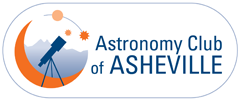Each of these photos from our Club Member Astro Image Gallery has more information available. Click the links in the captions to view it.
Click on the images to see a larger view.
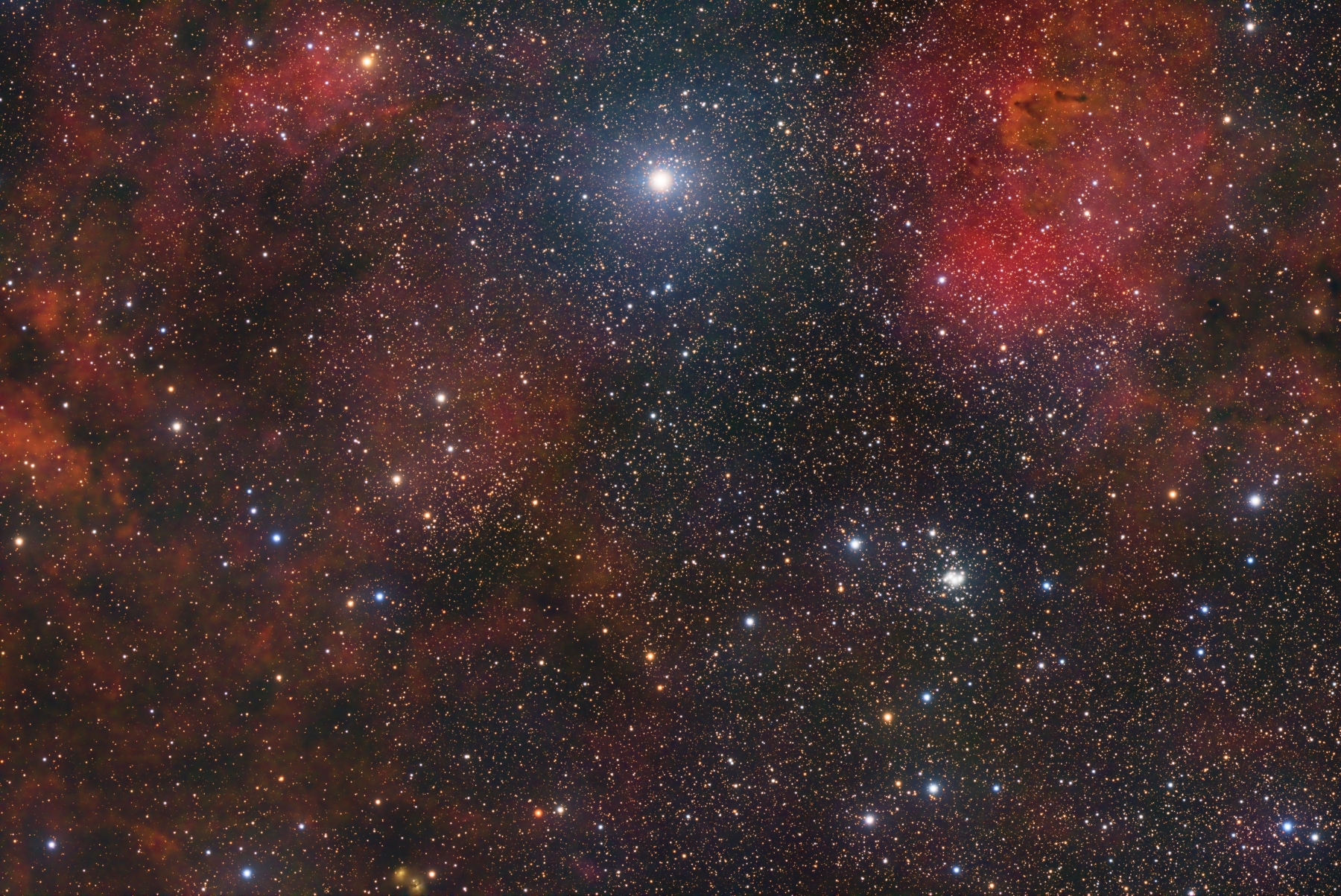
The Revenant of the Swan is the large bright star at top center, also known as P 34 Cyg, a variable star that has a history of brightening significantly then fading to below naked eye visibility. It is located in the constellation Cygnus the Swan, about 5,000 – 6,000 light years away. Photo by club member Tom Engwall, captured on his remote setup in Castilléjar Spain. Click here for more information about this image.
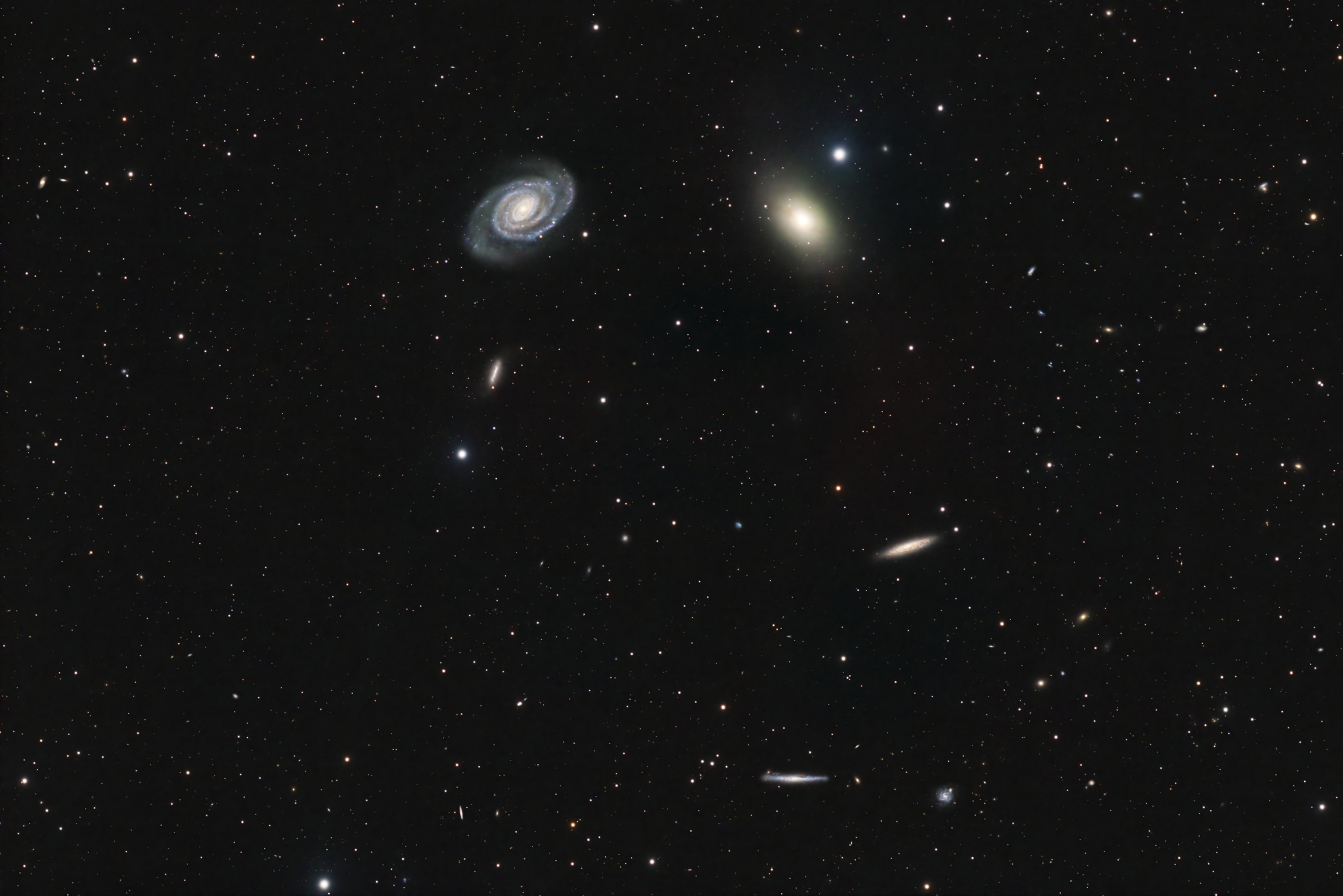
NGC 5364 is the beautiful face-on galaxy located about 54.5 million light years away in Virgo. Next to it is NGC 5363, a lenticular galaxy, about 65 million light years from Earth. Photo by club member Tom Engwall, captured on his remotely operated setup in Castilléjar, Spain. Click here for more information about this image.
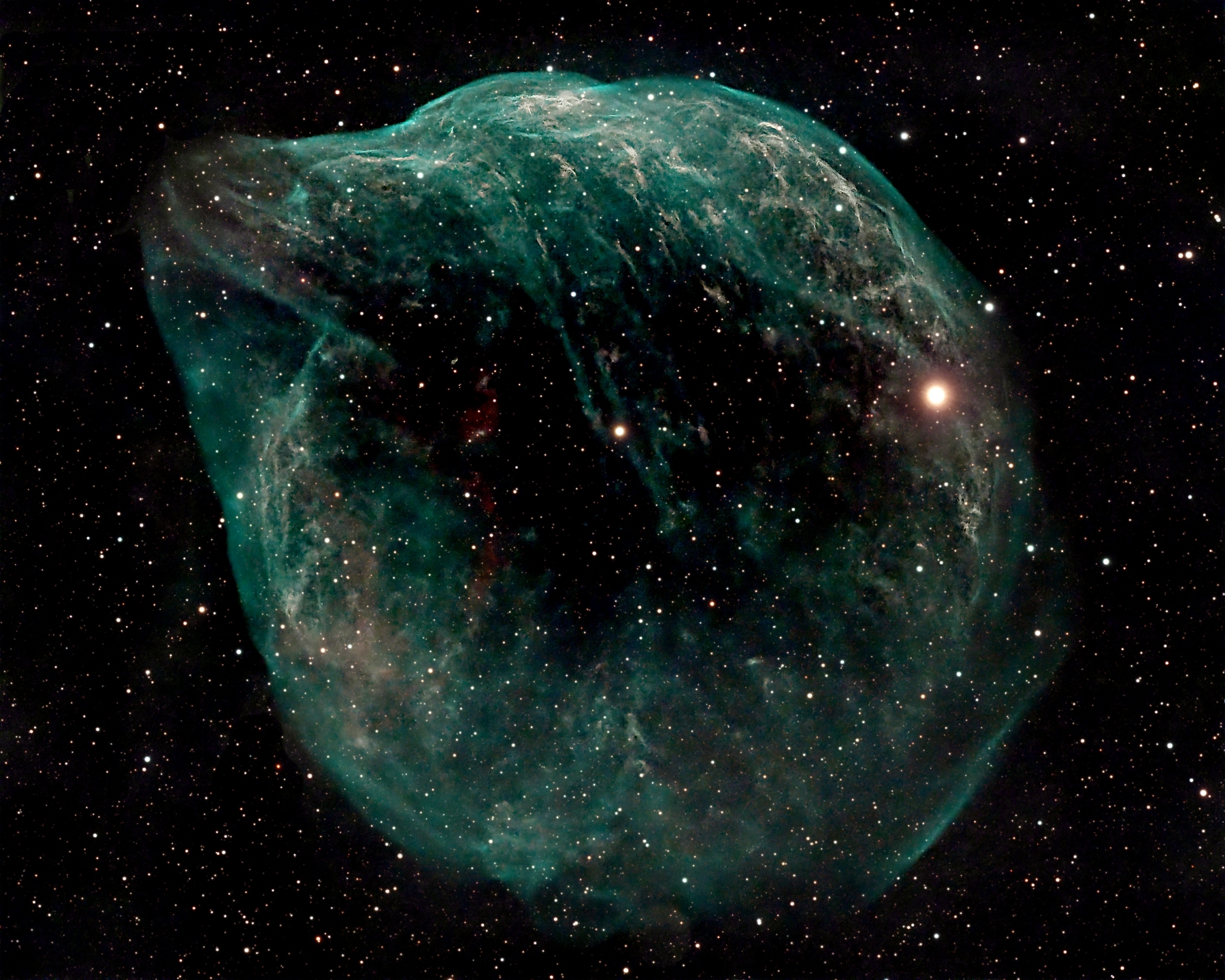
Sh2-308, commonly called The Dolphin-Head Nebula, about 4,500 light years distant in the constellation Canis Major. The nebula is about 60 light years across at its widest spot. Photo by club member Knox Worde. Click here for more information about this image.
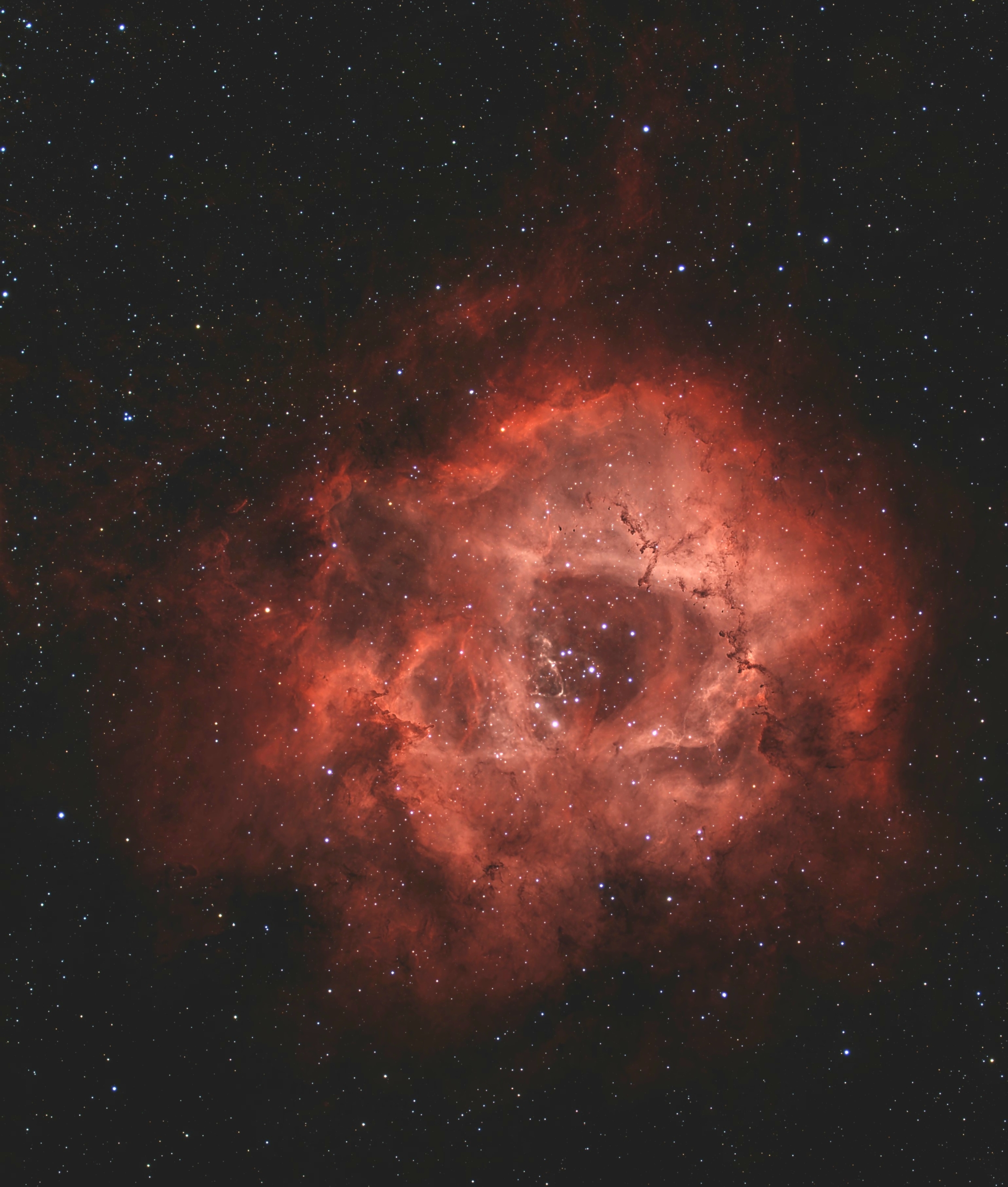
The Rosette Nebula (also known as Caldwell 49) is an H II (atomic Hydrogen that is ionized) region located near one end of a giant molecular cloud in the Monoceros region of the Milky Way Galaxy (near Orion). The cluster and nebula lie at a distance of about 5,000 light-years from Earth and measure roughly 130 light years in diameter. Photo by club member Vince Castello. Click here for more information about this image.
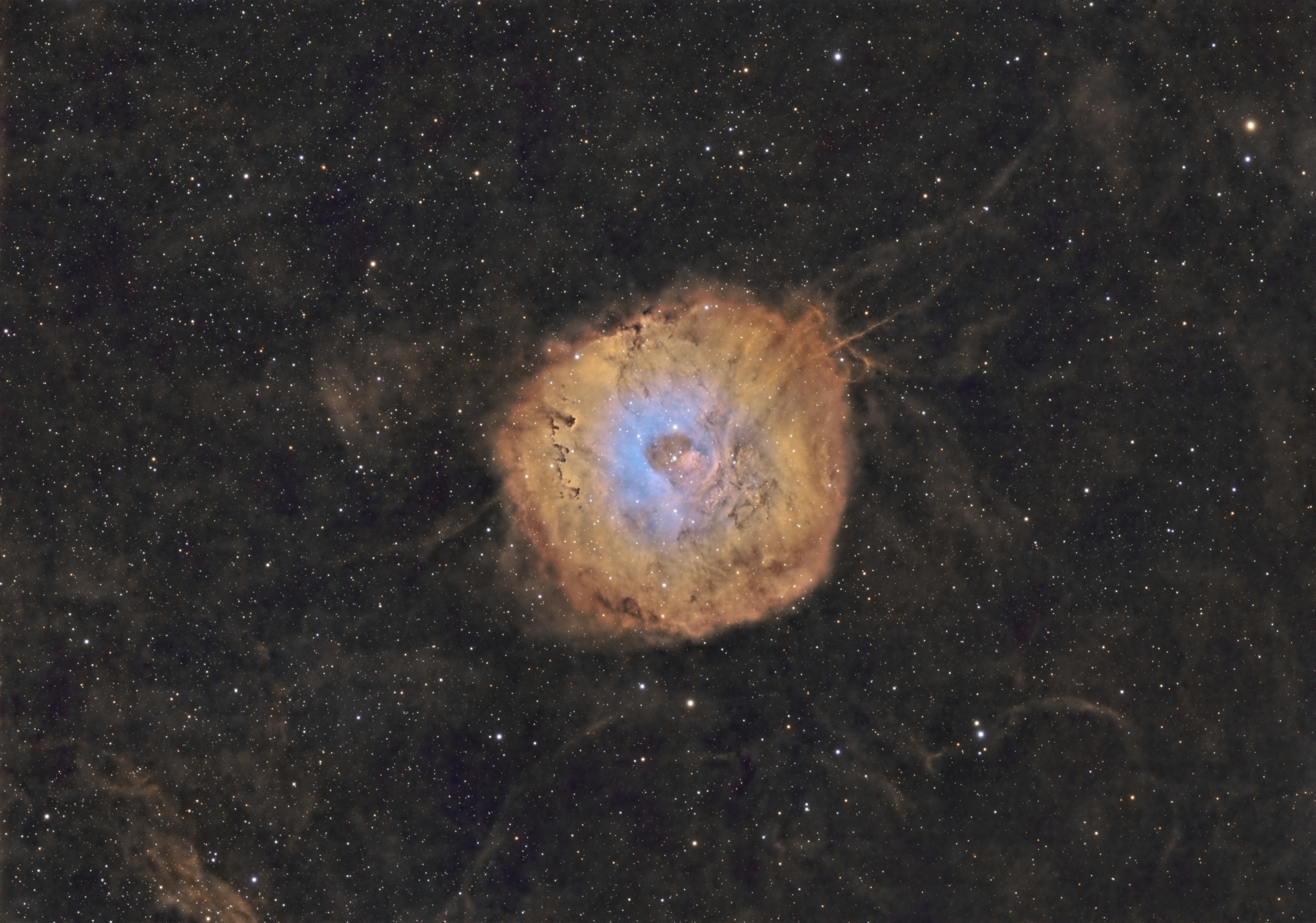
SH2-170, also known as the Little Rosette Nebula, in the constellation Cassiopeia – some 7500 light years away. Photo by club member Tom Engwall, captured on his remotely operated setup in Castilléjar, Spain. Click here for more information about this image.
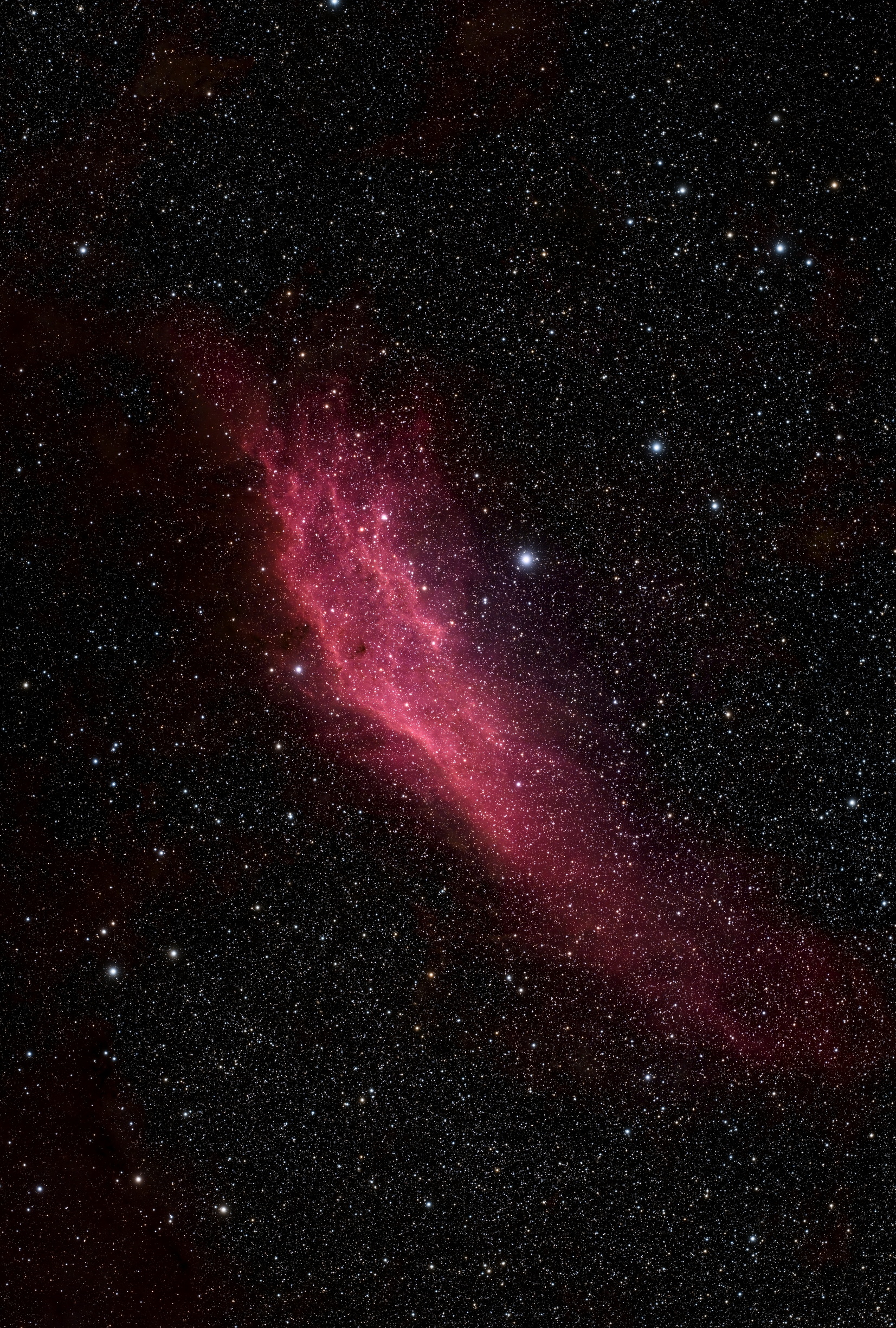
NGC1499, The California Nebula, about 1,500 light years distant in the Constellation Perseus. Photo by club member Knox Worde. Click here for more information about this image.
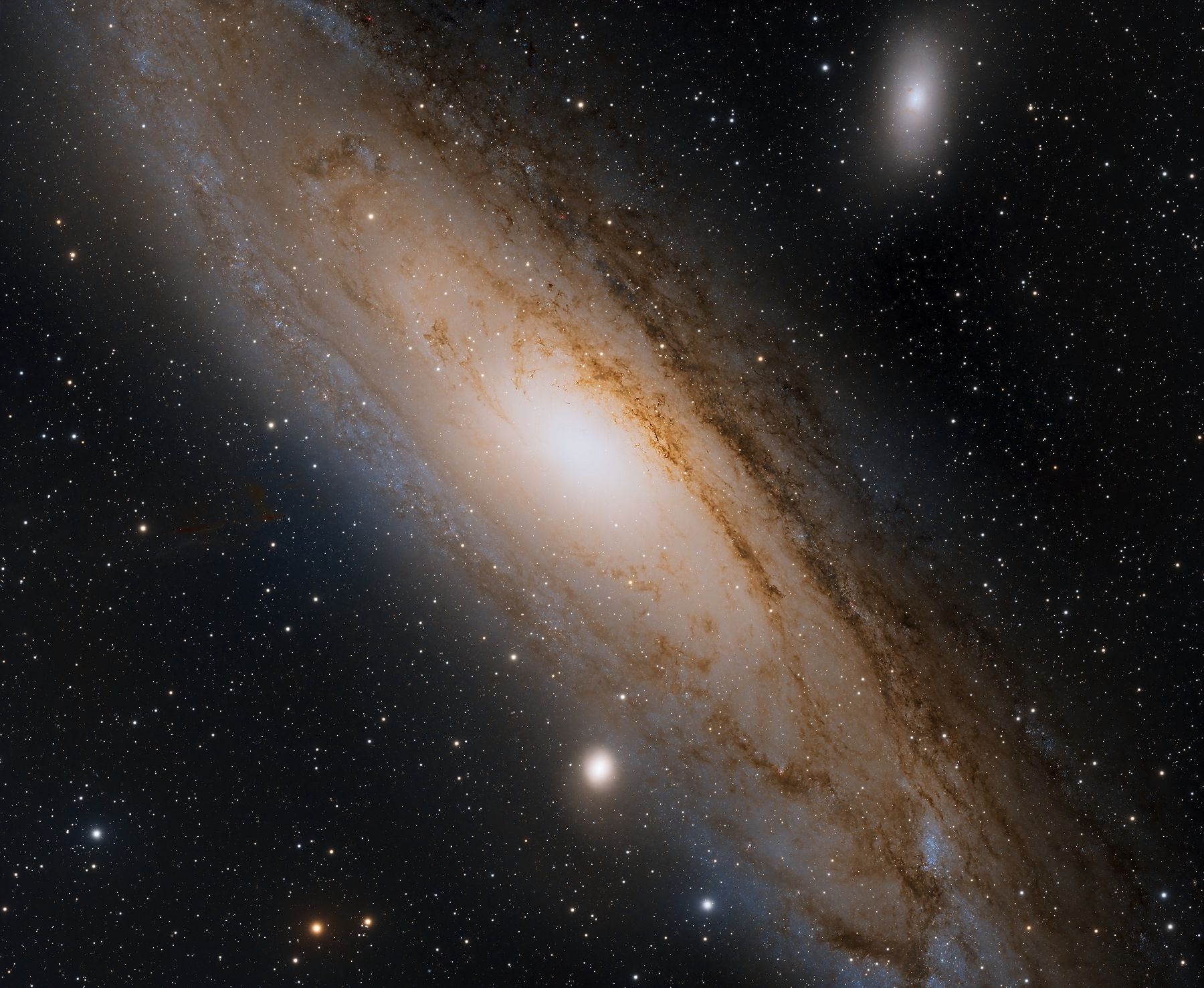
M31, The Andromeda Galaxy, is the nearest major galaxy to the Milky Way, at only 2.537 million light years away, in the constellation Andromeda. Photo by club member Tom Engwall, captured on his remotely operated setup in Castilléjar, Spain. Click here for more information about this image.
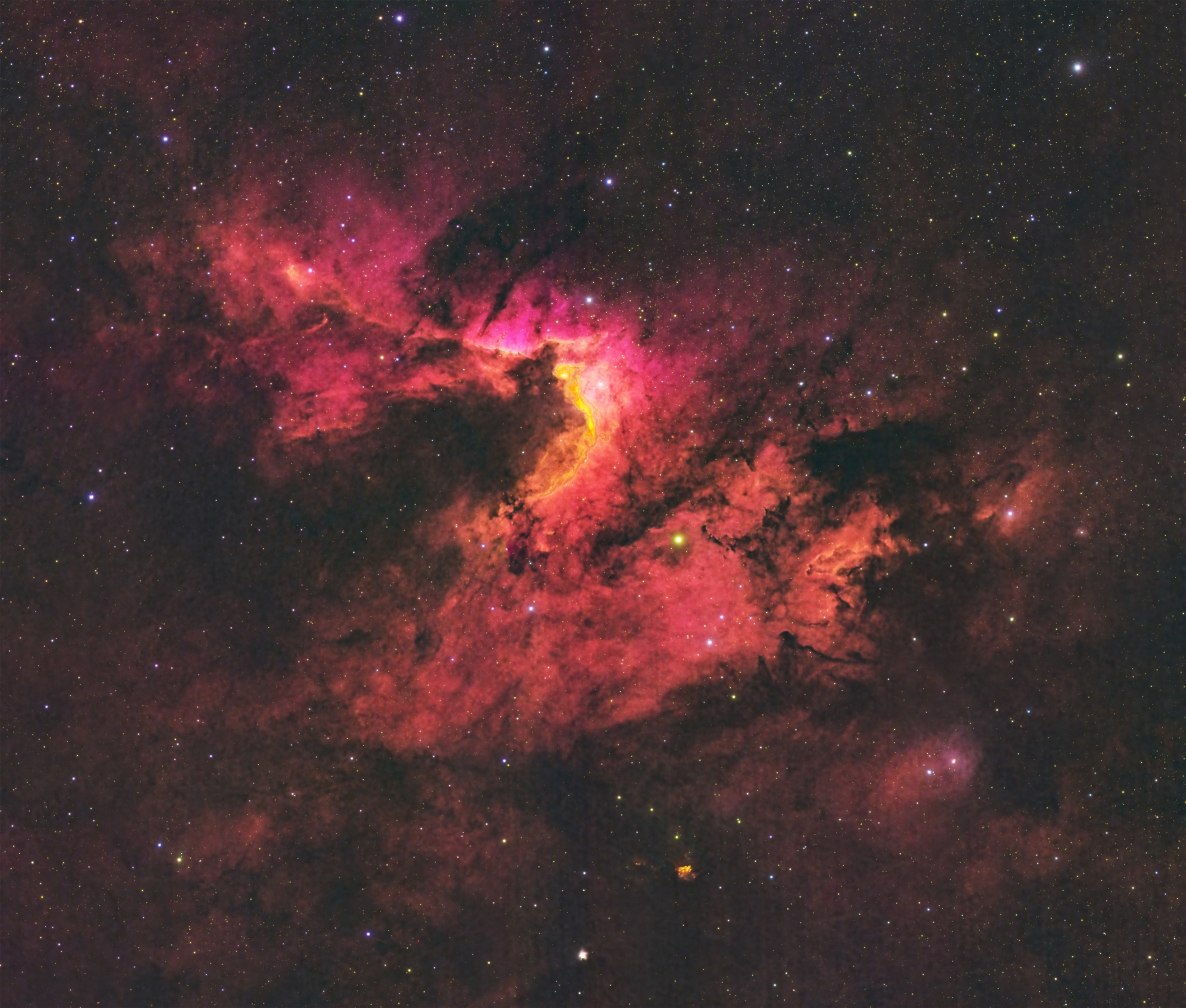
SH2-155, The Cave Nebula, a diffuse nebula in the constellation Cepheus, about 2400 light years away from Earth. Photo by club member Tom Engwall, captured on his remotely operated setup in Castilléjar, Spain. Click here for more information about this image.
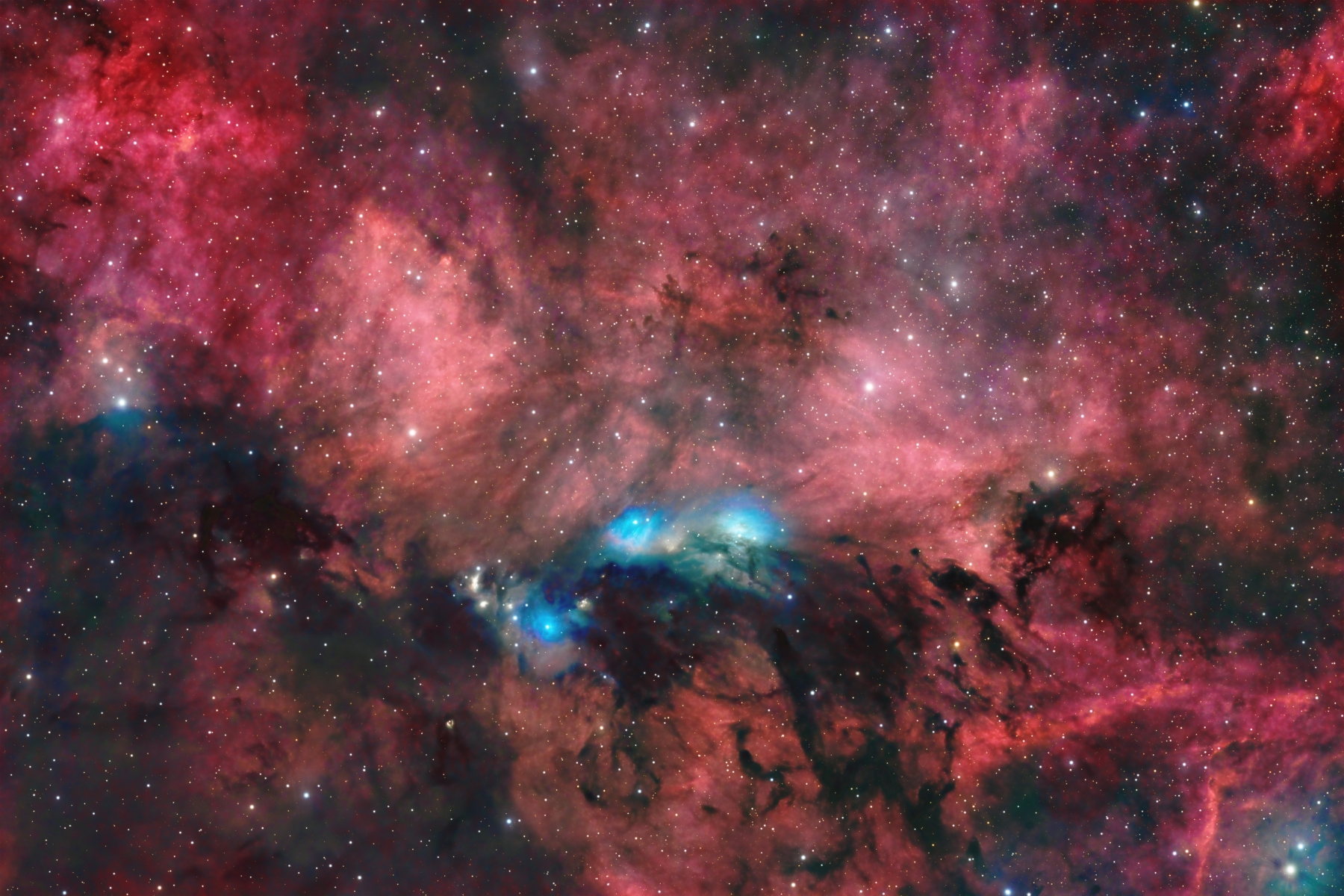
NGC 6914, the blue area in the center, is a reflection nebula, some 6000 light years away, in the constellation Cygnus. Photo by club member Tom Engwall, captured in July and August, 2023, with his remotely operated setup in Castilléjar, Spain. Click here for more information about this image.
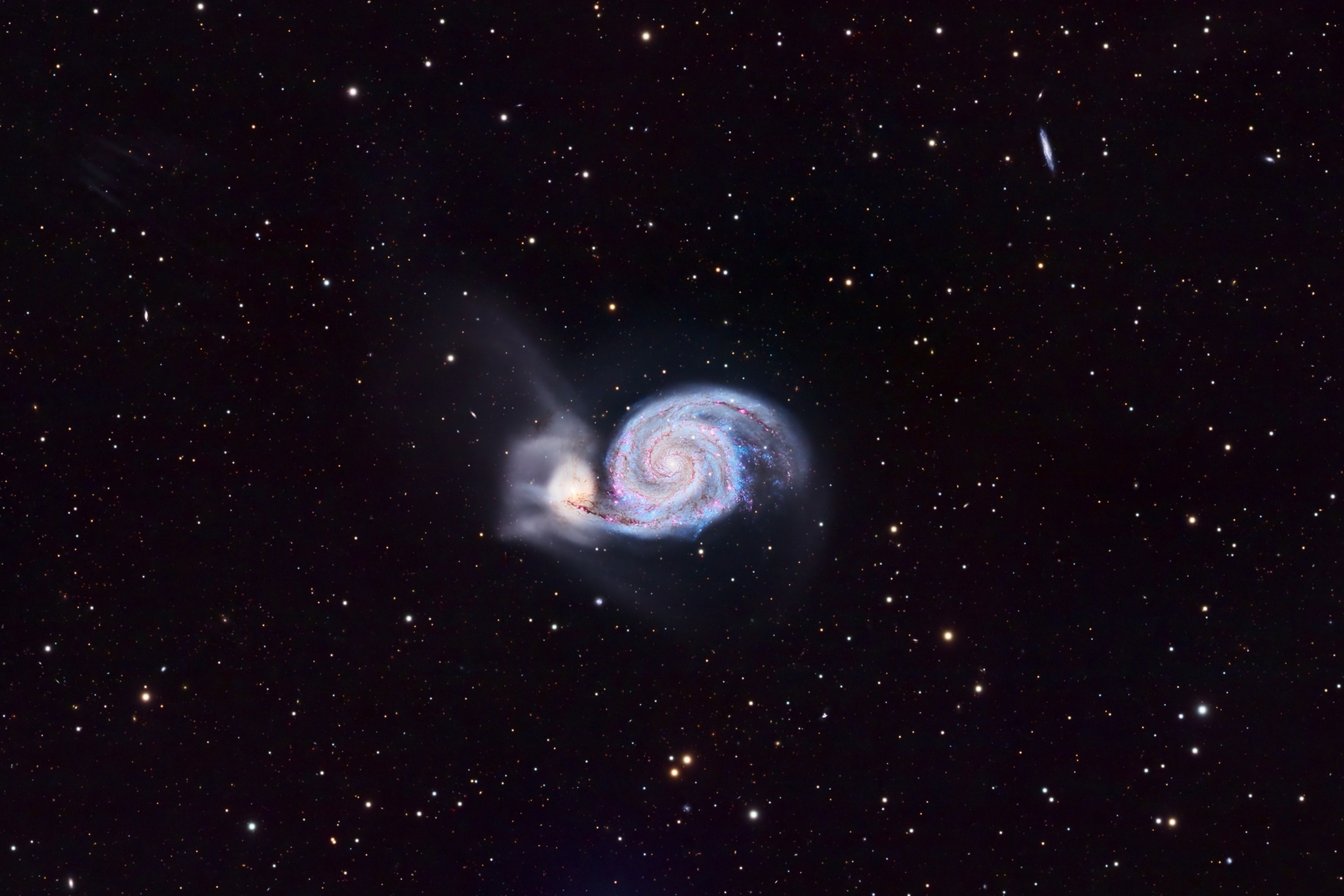
M51, The Whirlpool Galaxy. This is actually two galaxies in the process of merging with each other, about 31 million light years away from Earth. Photo by club member Tom Engwall using his remotely operated setup in Castilléjar, Spain. Click here for more information about this image.
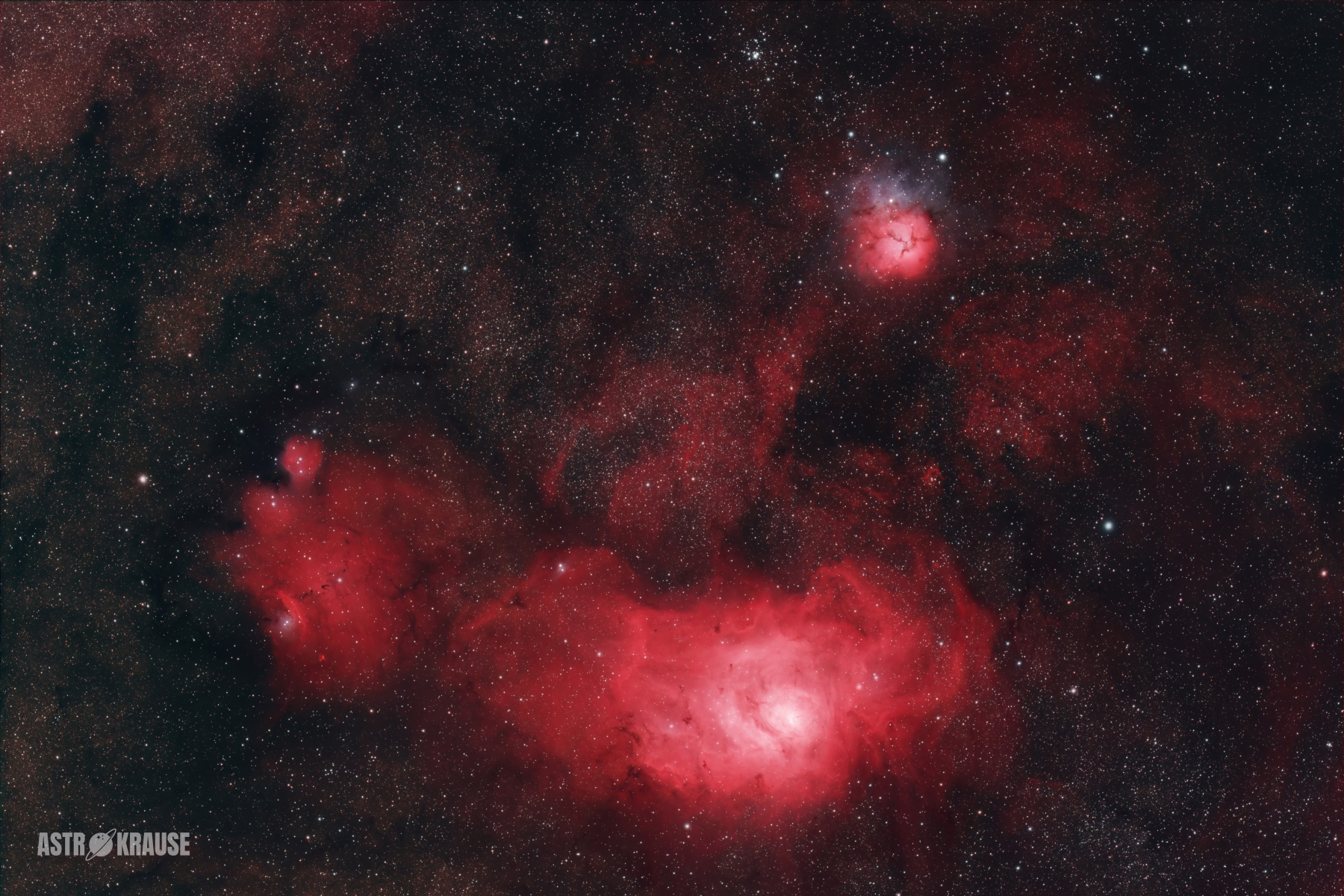
The Lagoon and Trifid nebulae are both star-forming clouds of interstellar gas and dust. The Lagoon is 5,200 light-years from Earth while the Trifid is 9,000. Photo by club member David Krause. Click here for more information about this image.
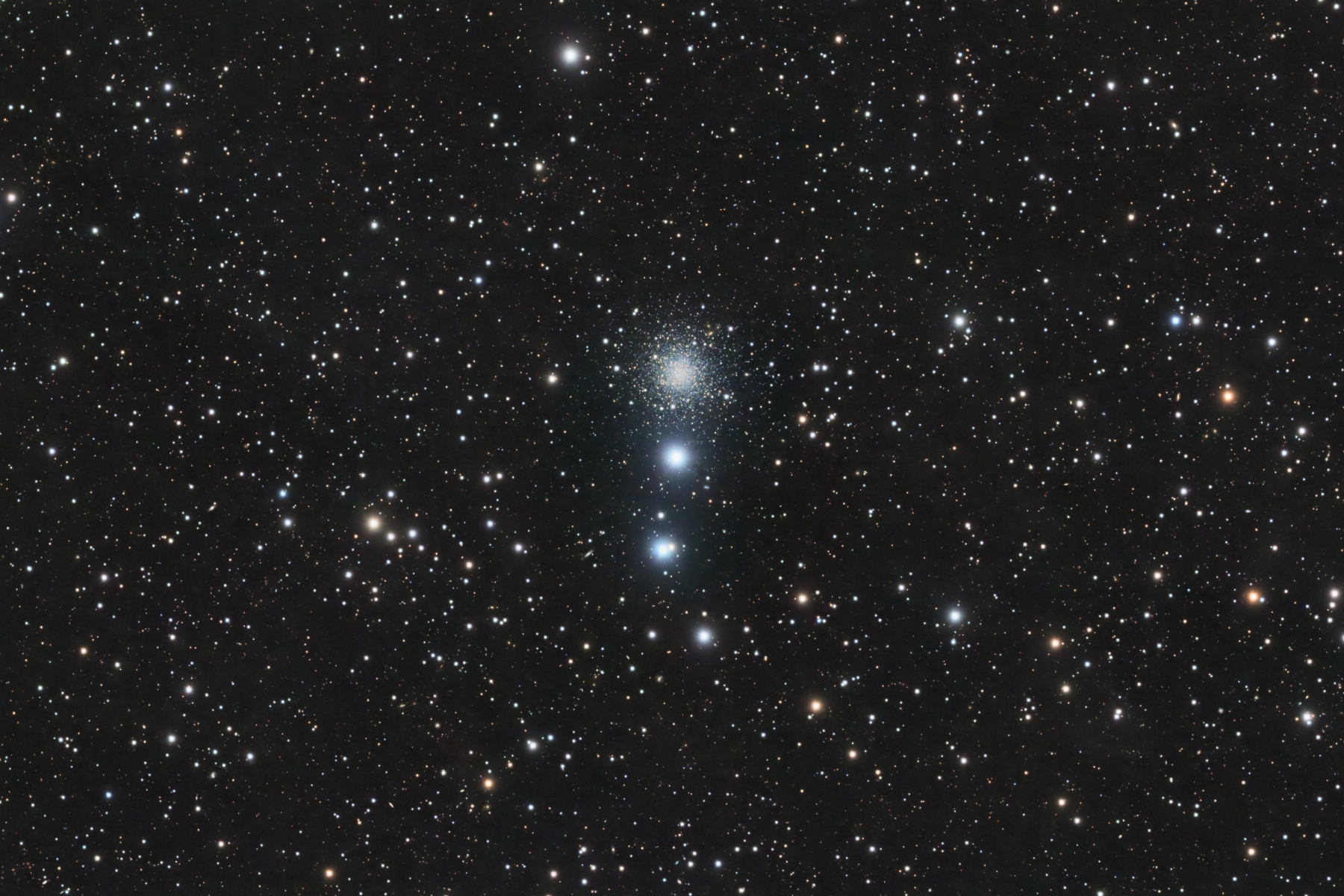
NGC 2419, The Intergalactic Wanderer. This globular cluster is part of the Milky Way with an orbit that takes it 300,000 light years out. Photo by club member Tom Engwall at the club’s Grassland Mountain Observatory. Click here for more information about this image.
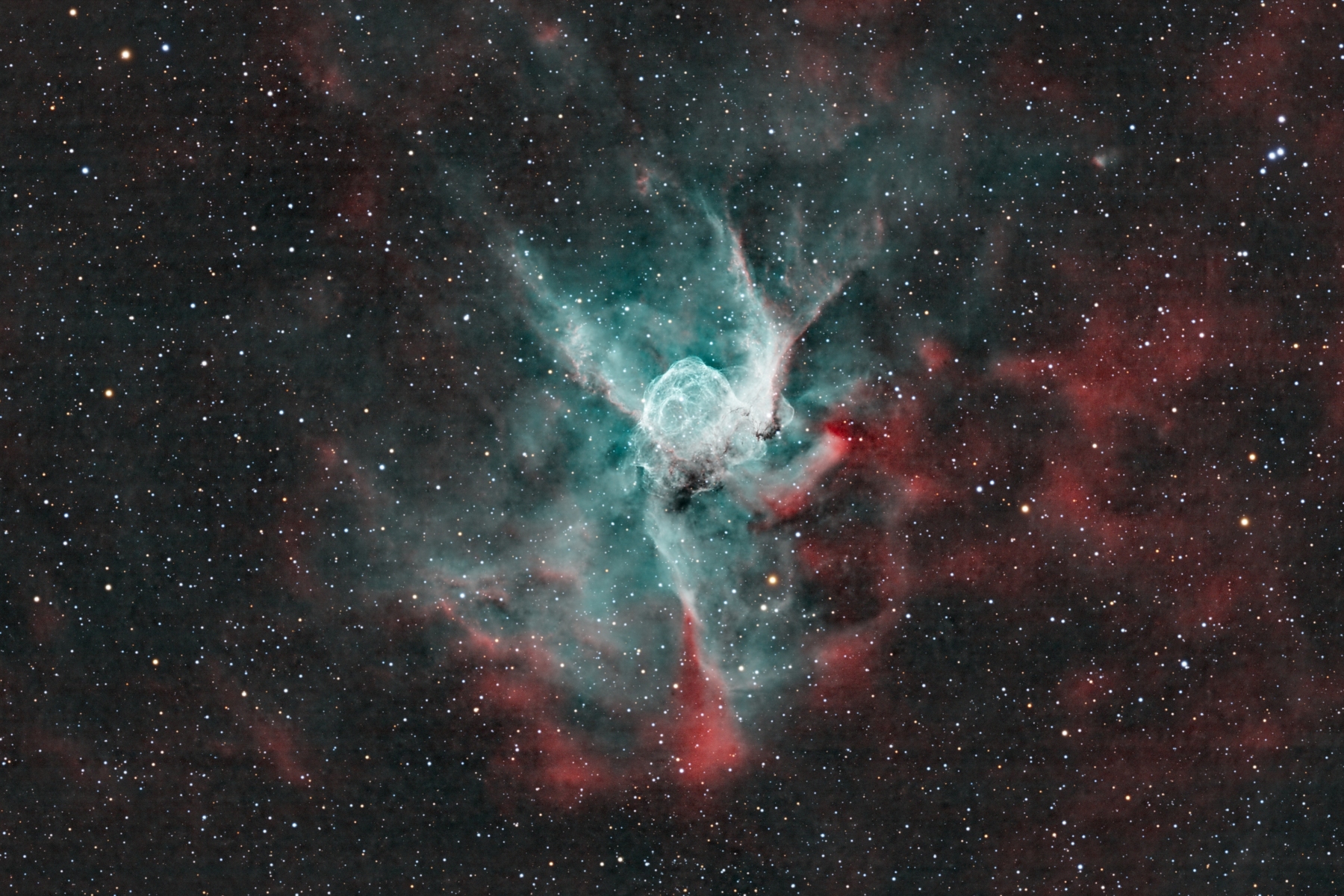
NGC 2359, Thor’s Helmet, about 11,960 light years away in the constellation Canis Major. Photo by club member Tom Engwall using his remotely operated setup in Castilléjar, Spain. Click here for more information about this image.
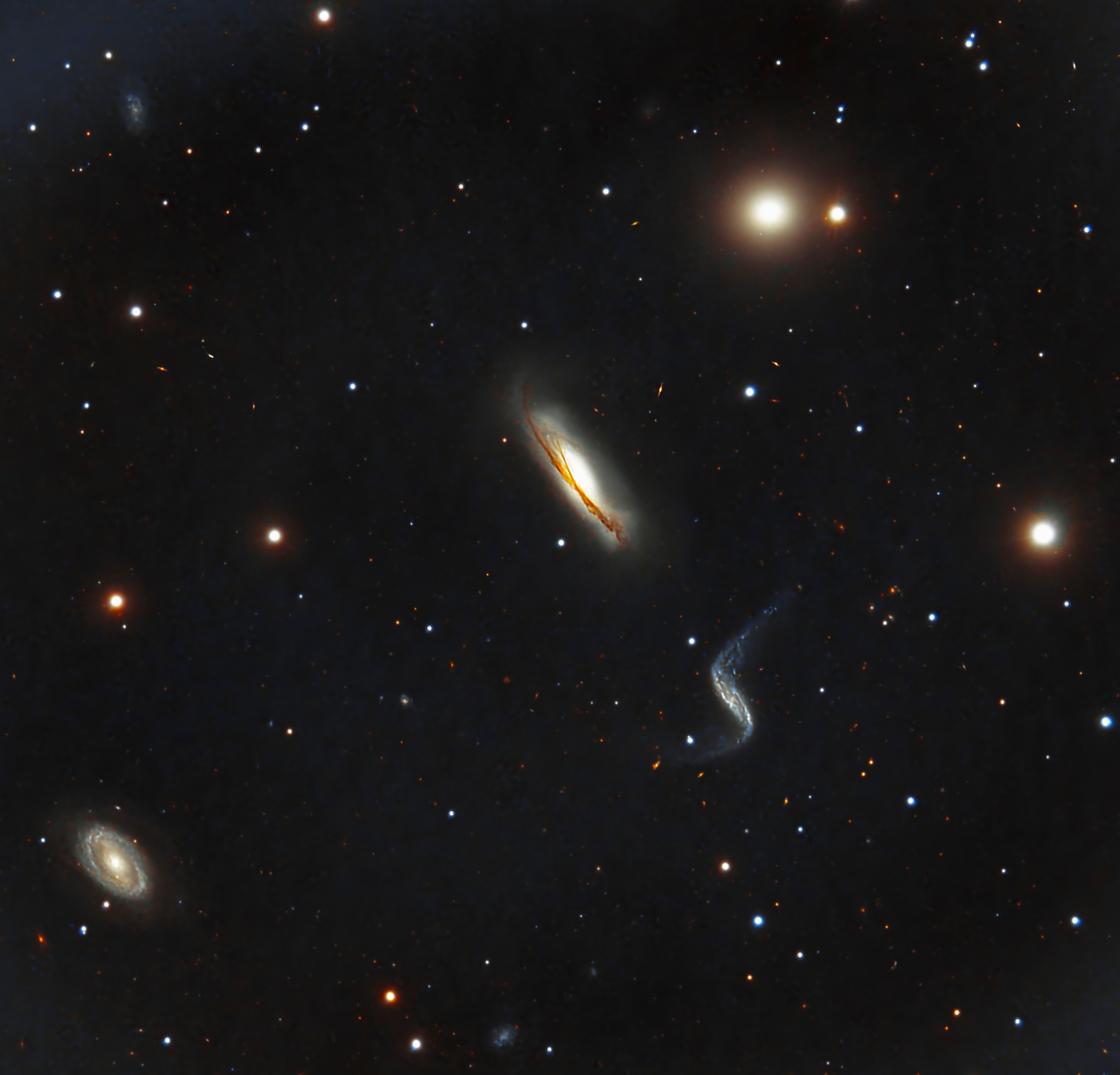
The Hickson 44 Galaxy Group on the edge of the Virgo Supercluster of galaxies, about 70-80 million light years distant. Photo by club member Vince Castello. Click here for more information about this image.
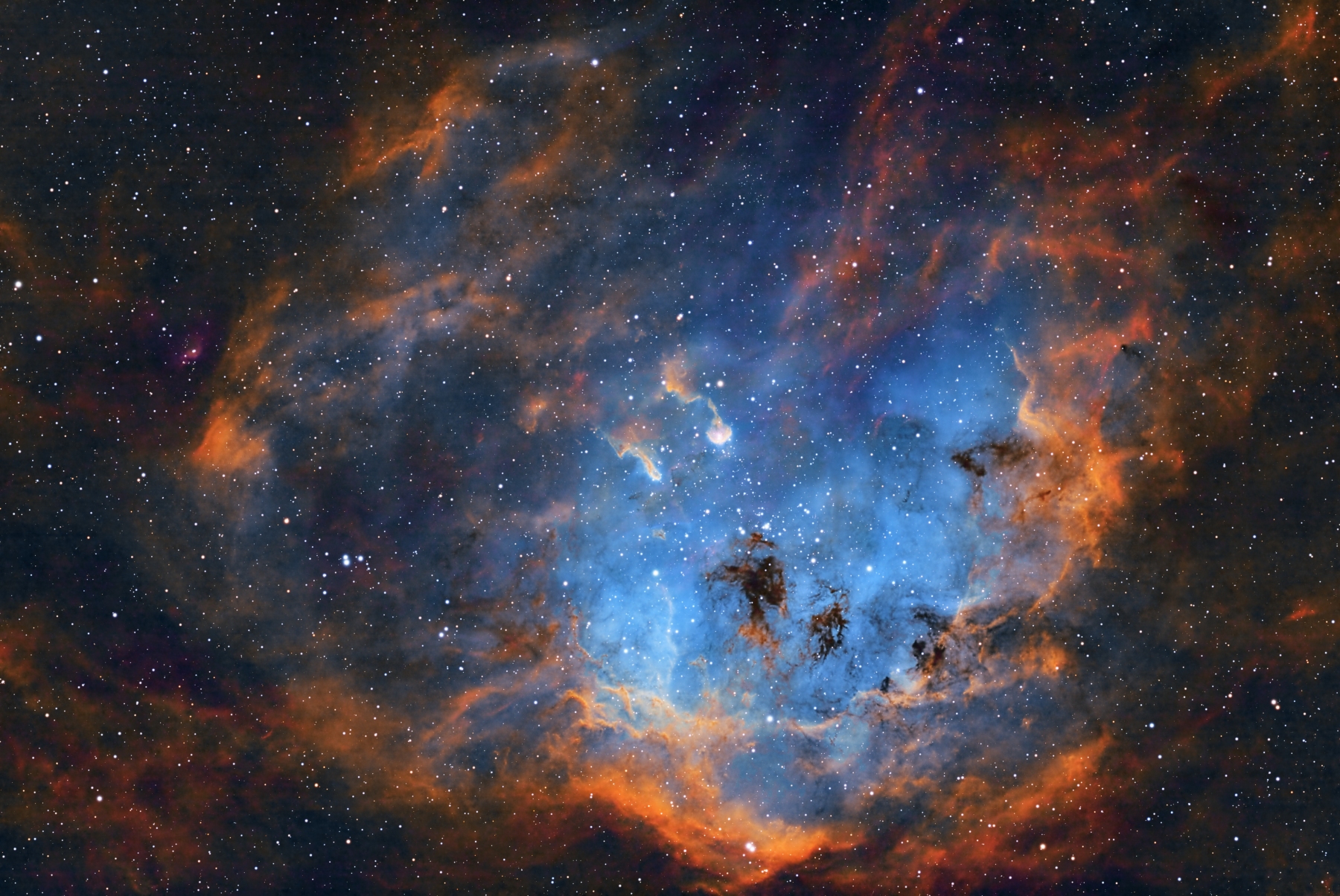
IC 410 also known as the Tadpole Nebula, about 12,000 light years away located in the constellation Auriga. Photo by club member Tom Engwall, captured on his remotely operated setup in Castilléjar, Spain. Click here for more information about this image.
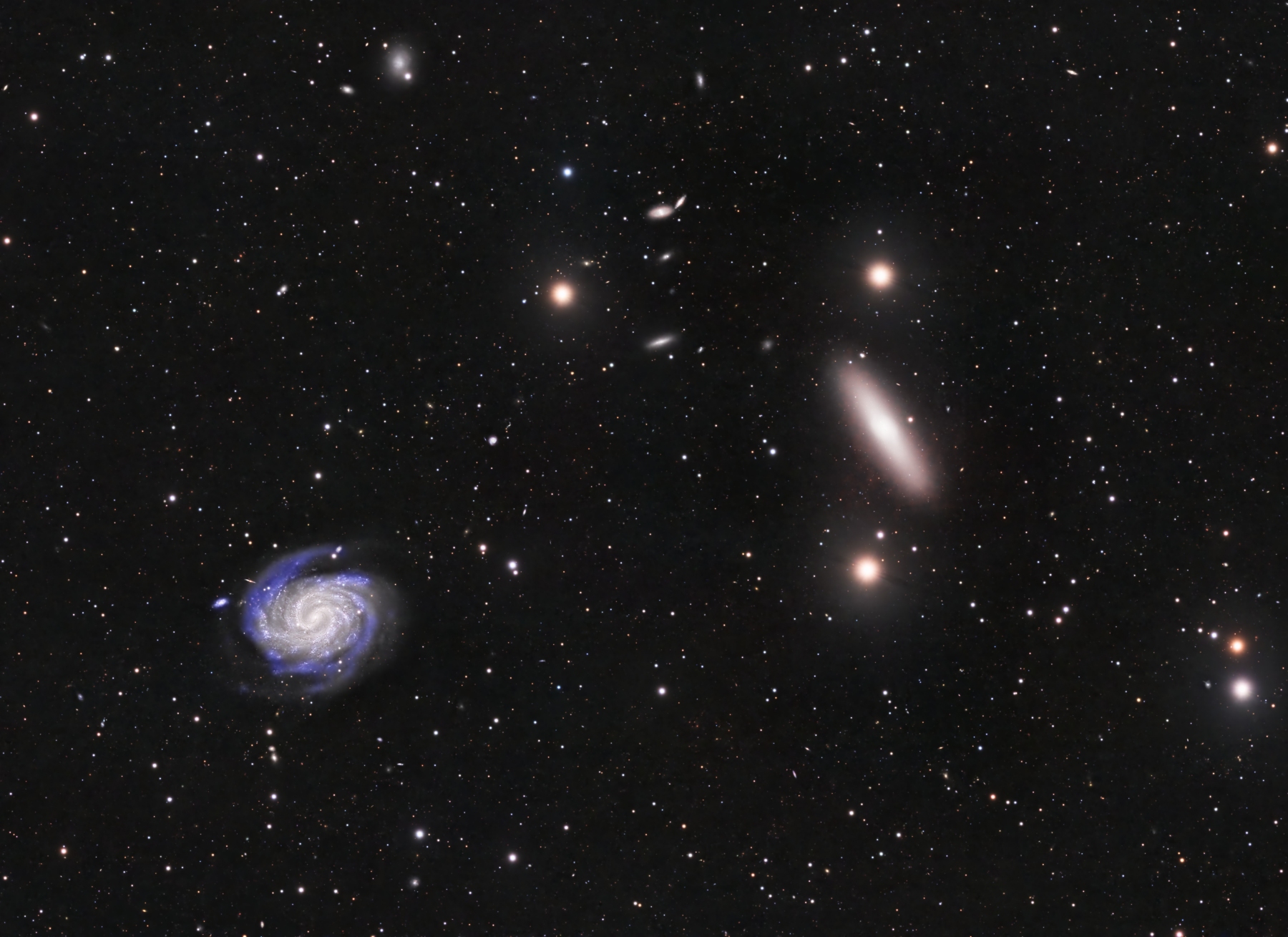
NGC 4535 and NGC 4526 and several other smaller galaxies, around 55 million light years from Earth, members of the Virgo Cluster. Photo by club member Tom Engwall, captured with his remotely operated setup in Castilléjar, Spain. Click here for more information about this image.
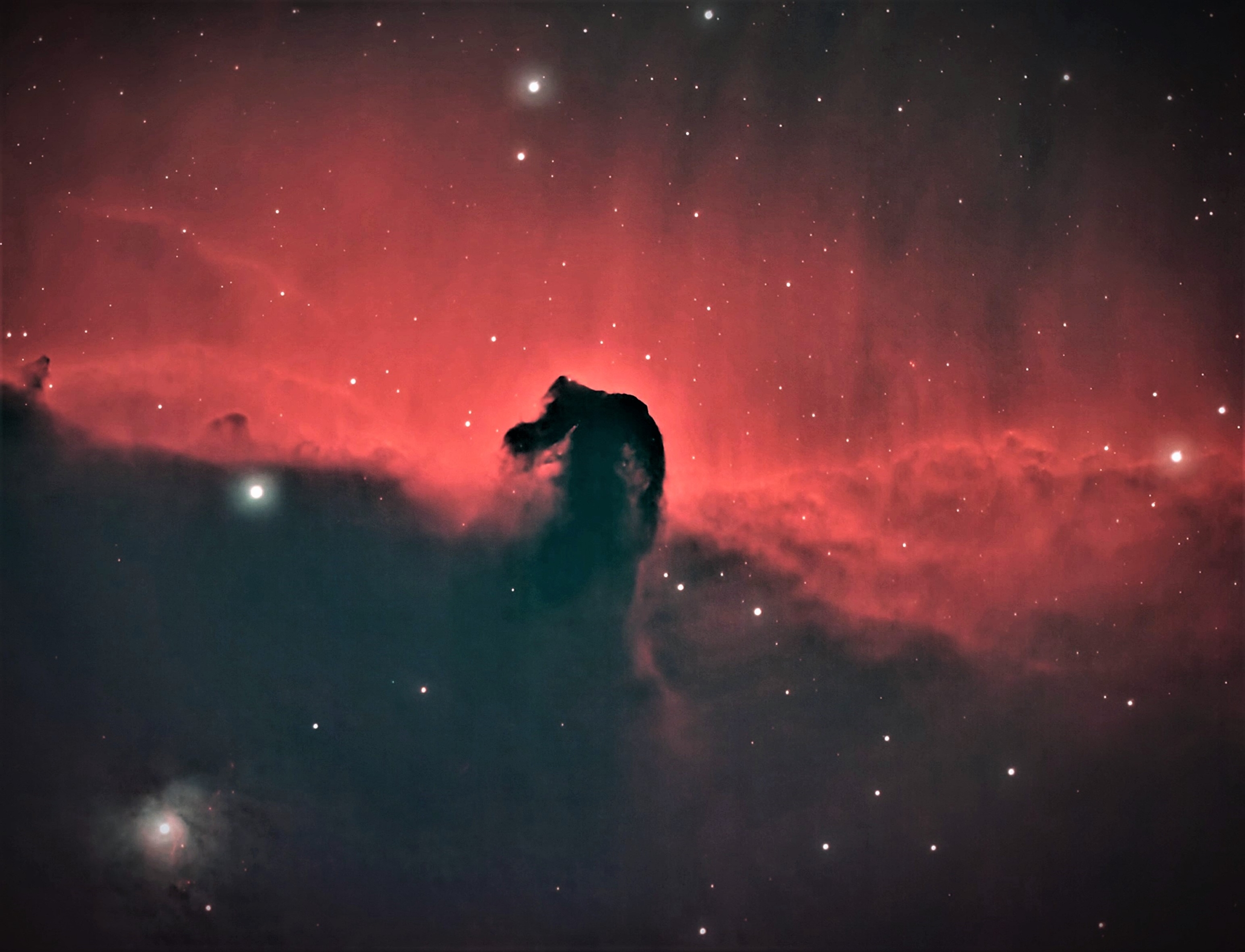
IC434, the Horsehead Nebula (also known as Barnard 33) in the constellation of Orion, about 1400 light years from Earth. Photo by club member Vince Castello. Click here for more information about this image.
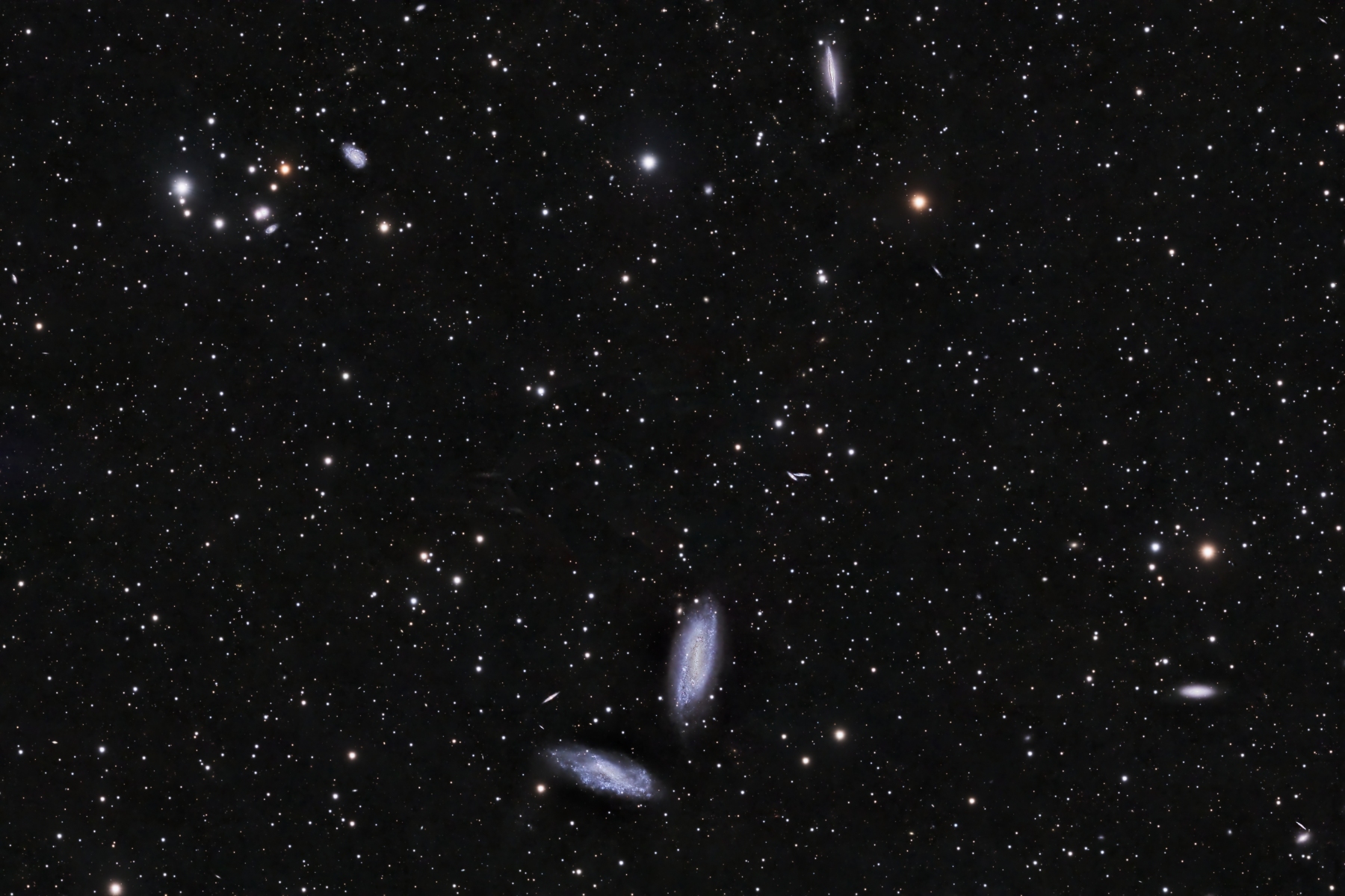
Galaxy rich area in the Triangulum. The two largest galaxies are NGC 672 and IC 1727, about 23 million light years away. Photo by club member Tom Engwall, captured with his remotely operated setup at PixelSkies Observatory in Castilléjar, Spain. Click here for more information about this image.
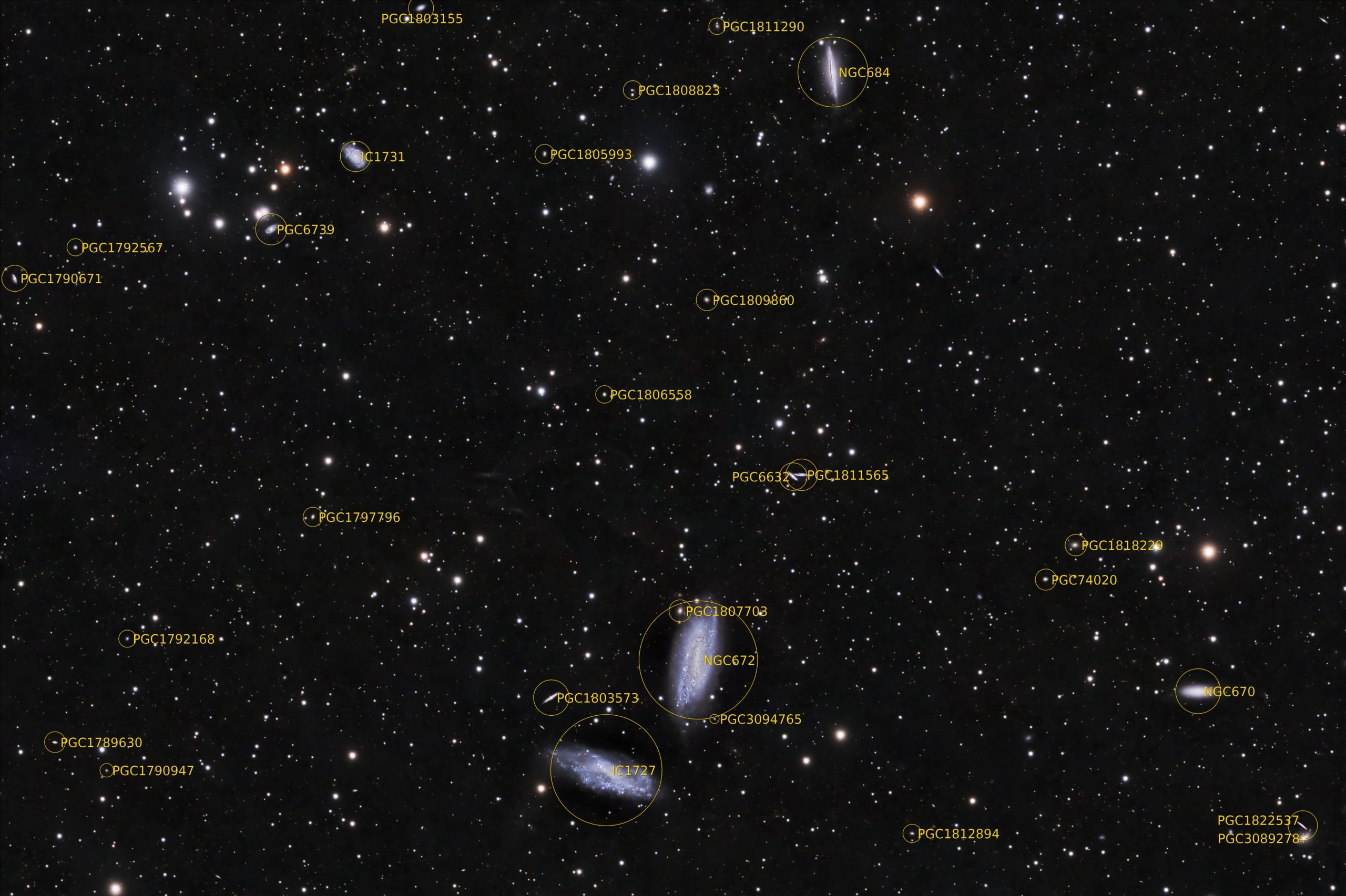
Annotated version of galaxy rich area in the Triangulum. The two largest galaxies are NGC 672 and IC 1727, about 23 million light years away. Photo by club member Tom Engwall, captured with his remotely operated setup at PixelSkies Observatory in Castilléjar, Spain. Click here for more information about this image.
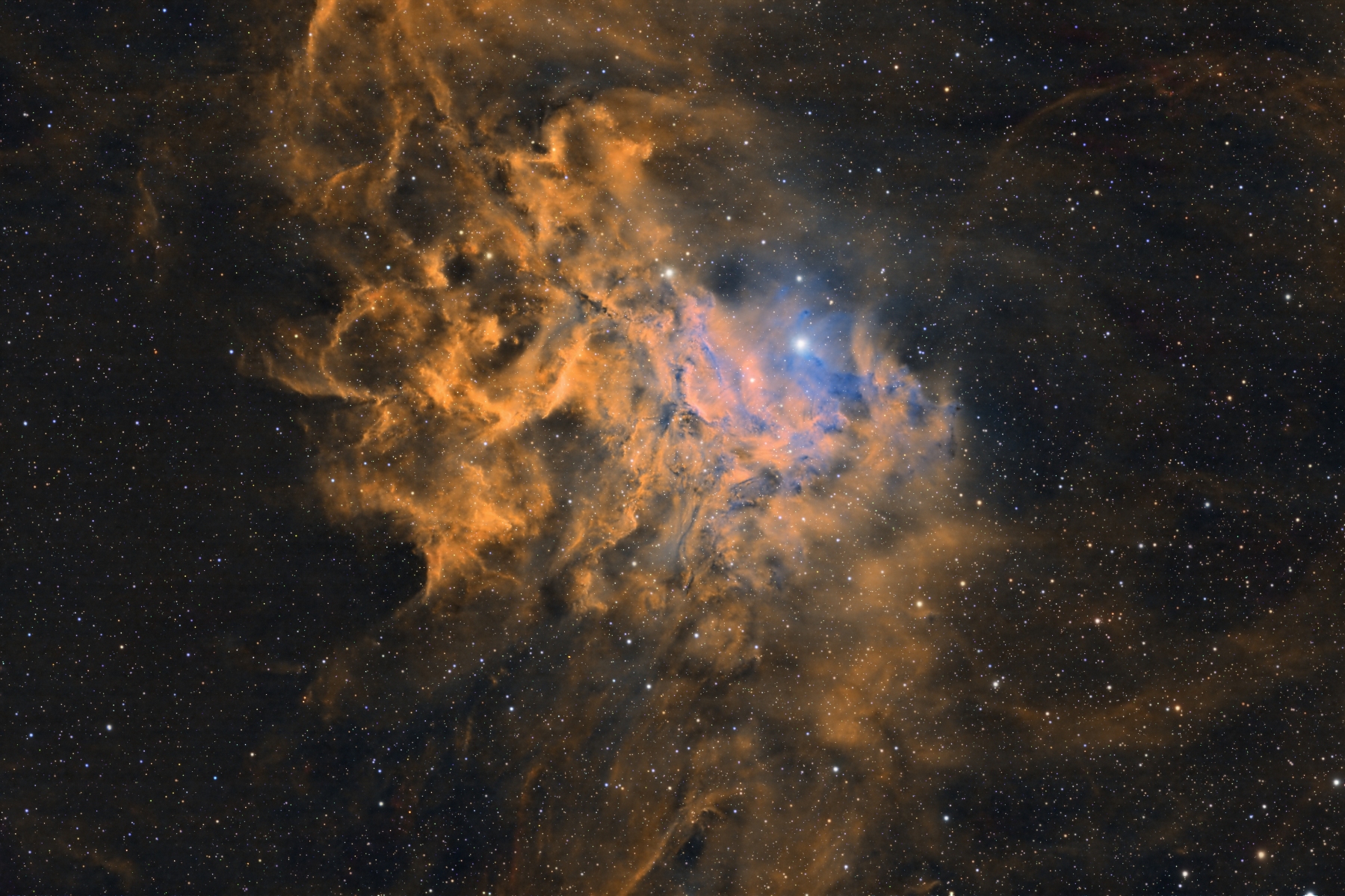
IC 405, The Flaming Star Nebula located in the constellation Auriga about 1500 light years away. Photo by club member Tom Engwall, captured on his remotely operated setup in Castilléjar, Spain. Click here for more information about this image.
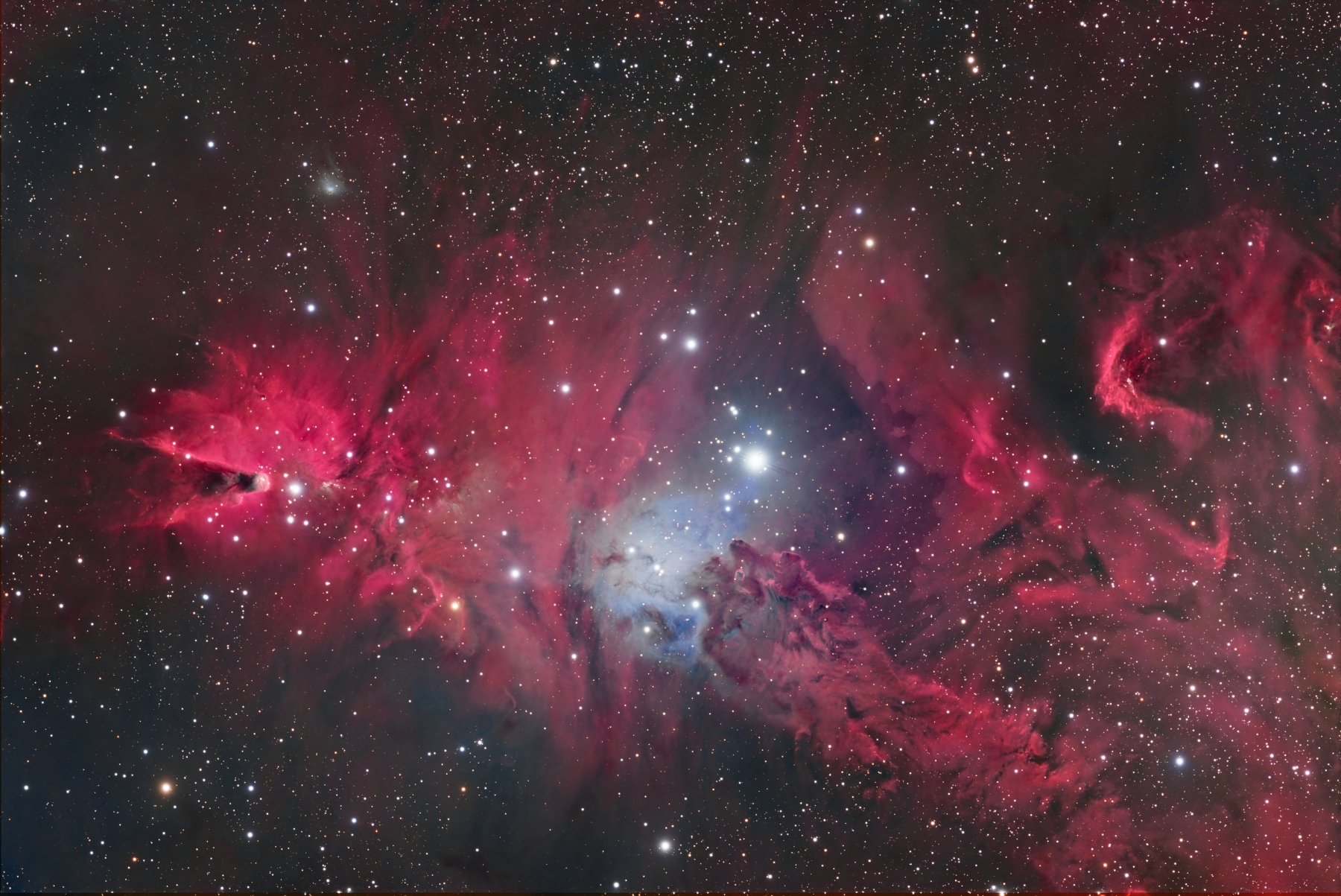
NGC 2264, the official designation for two objects, the Cone Nebula and the Christmas Tree Cluster, about 2400 light years away in the constellation Monoceros. Photo by club member Tom Engwall, using his remote setup in Castilléjar, Spain. Click here for more information about this image.
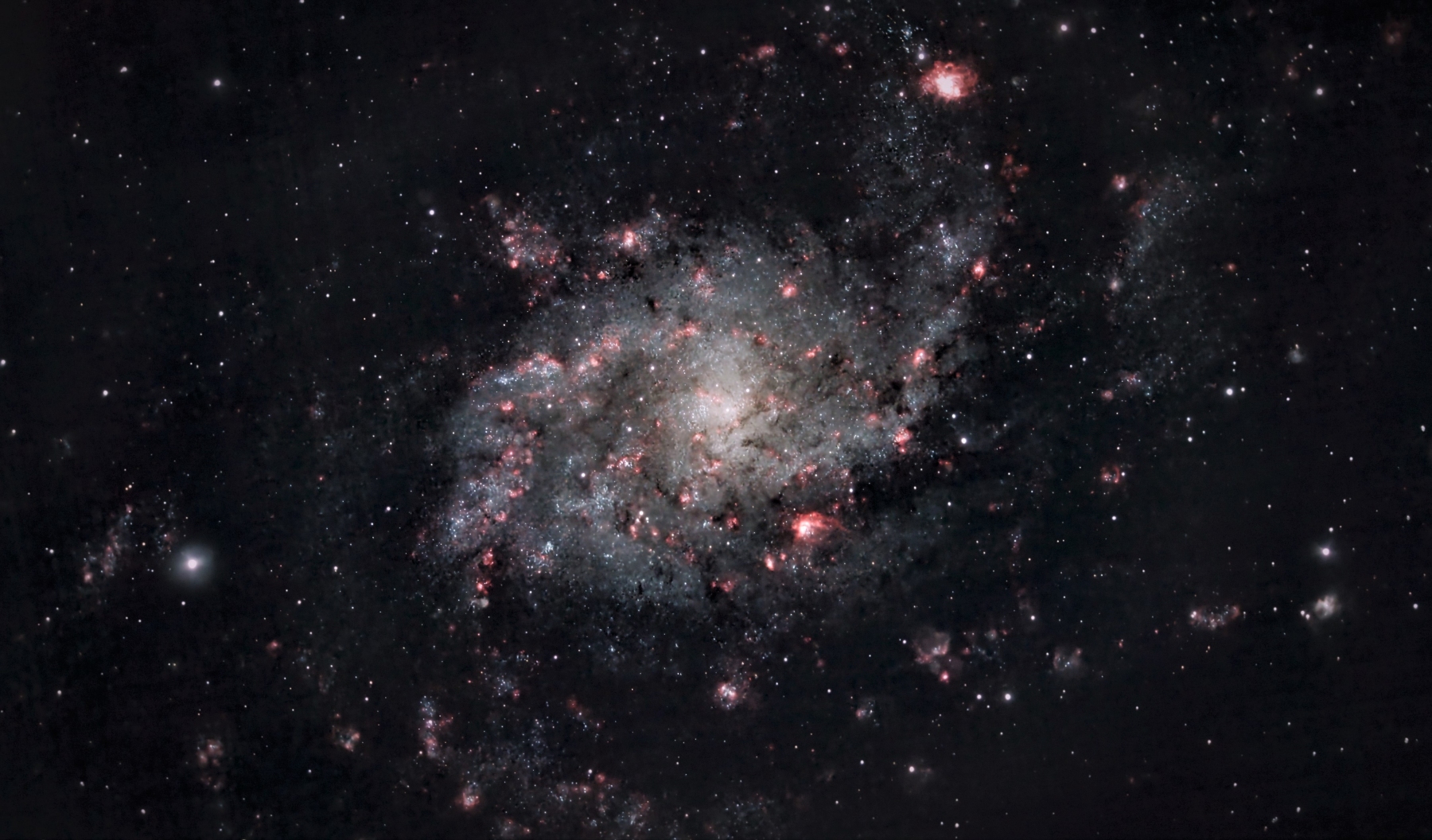
M33 or the Triangulum Galaxy is a spiral galaxy about 2.7 million light years from Earth. Photo by club member Vince Castello. Click here for more information about this image.
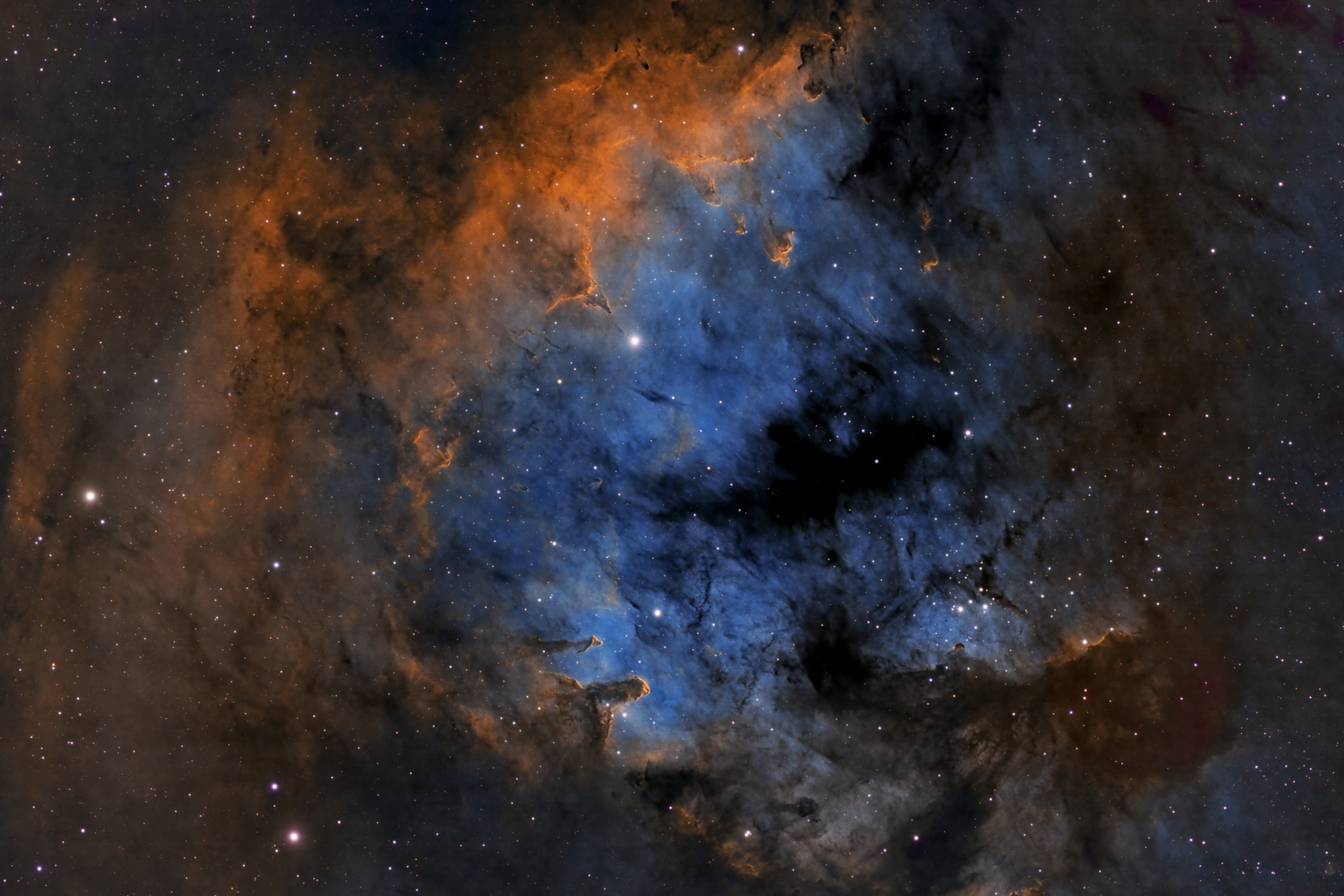
NGC 7822, an active star forming region in the constellation Cepheus, about 2,935 light years from Earth. Photo by club member Tom Engwall captured on his remote setup in Castilléjar, Spain. Click here for more information about this image.
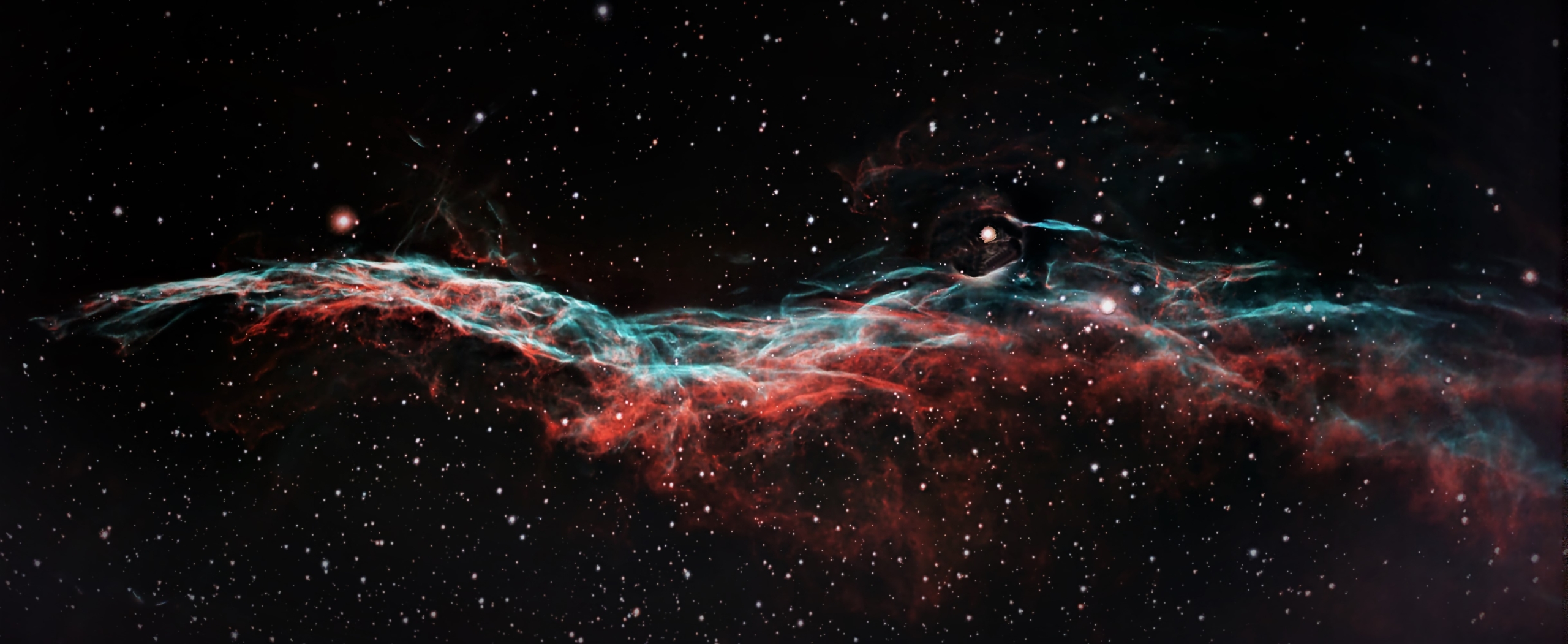
The Western Veil Nebula (or the Witches Broom Nebula or NGC 6960) supernova remnant in the constellation Cygnus. Photo by club member Vince Castello. Click here for more information about this image.
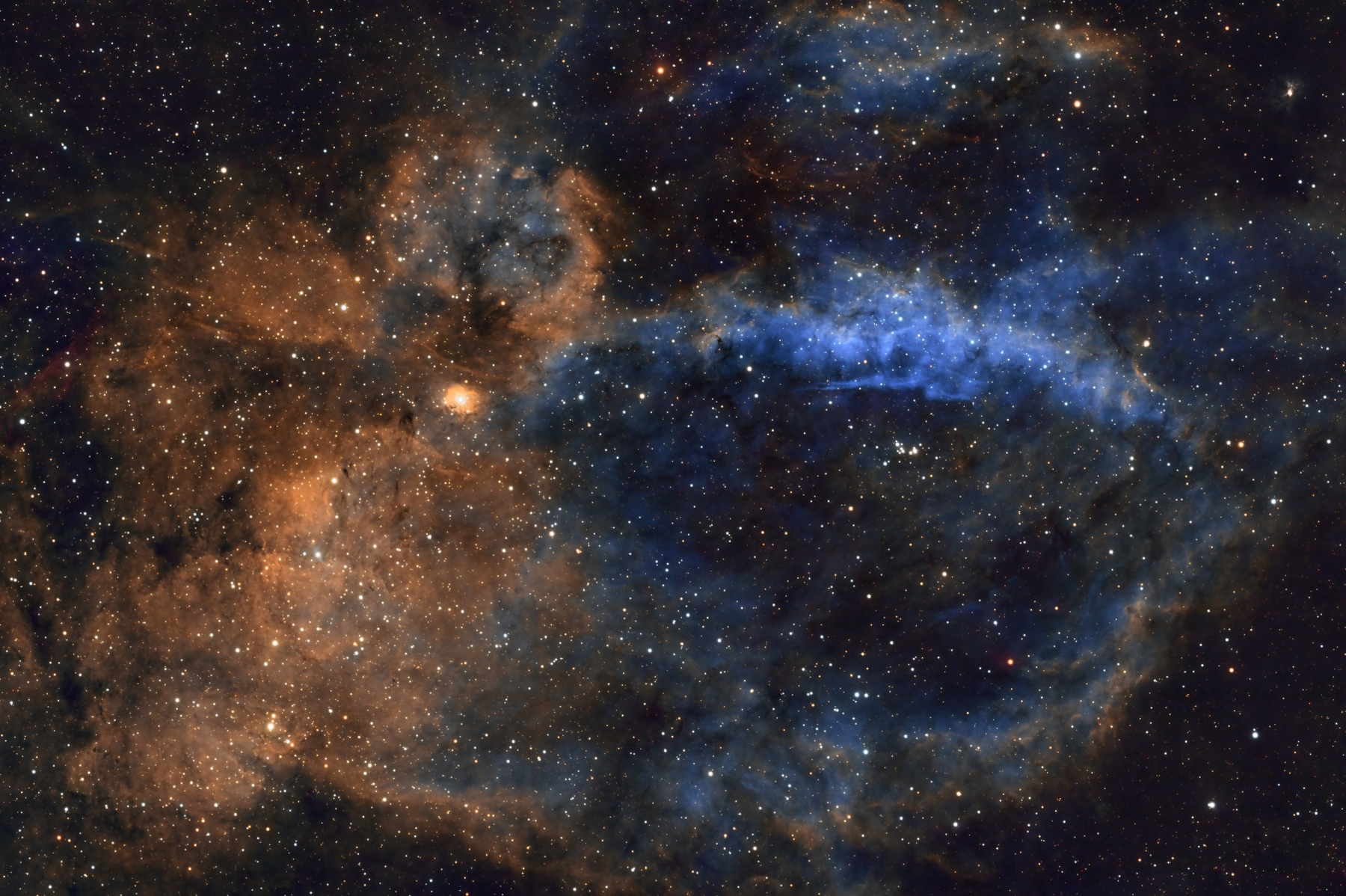
Sh2-157 and the Lobster Claw, 11,000 light years away in Cassiopeia. Photo by club member Tom Engwall, from his remote setup in Castilléjar, Spain. Click here for more information about this image.
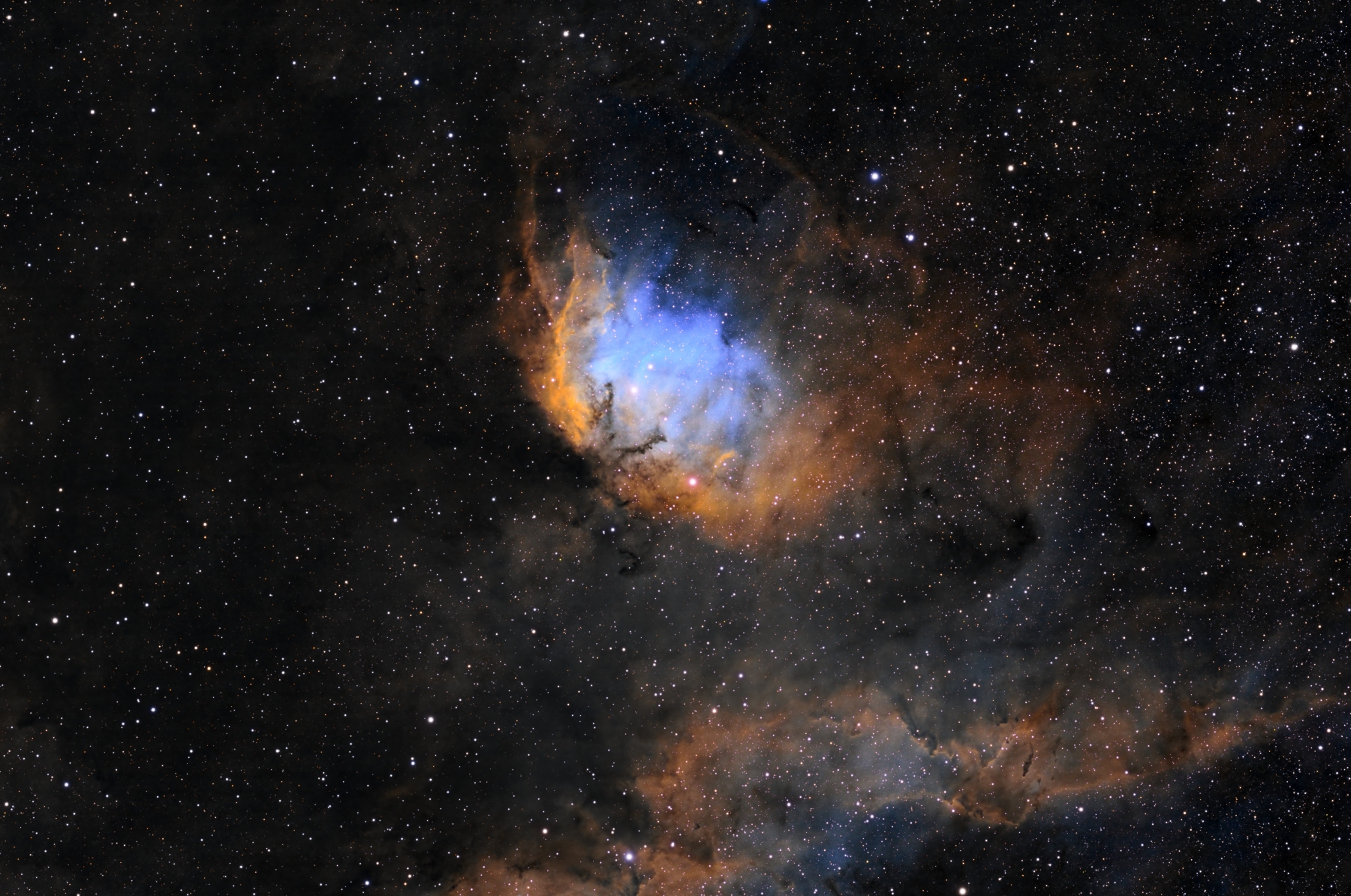
Sh2-101, “The Tulip Nebula,” about 6000 light years away in the constellation Cygnus. Photo by club member Tom Engwall, remotely captured at his setup in Castilléjar, Spain. Click here for more information about this image.
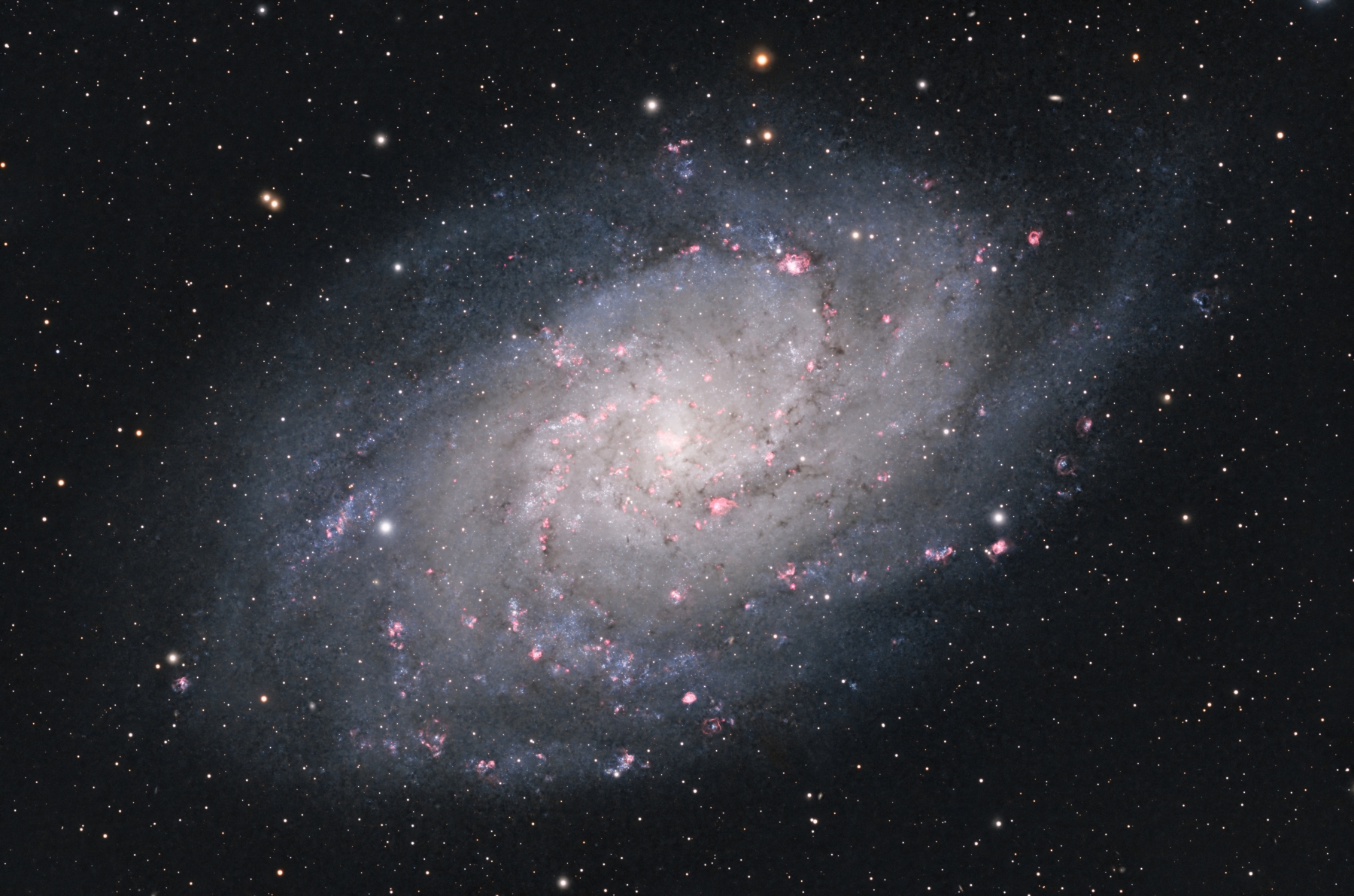
M33, the Triangulum Galaxy, a spiral galaxy about 2.7 million light years away and part of the Local Group. Photo by club member Tom Engwall, remotely captured at his setup in Castilléjar, Spain in September, 2022. Click here for more information about this image.
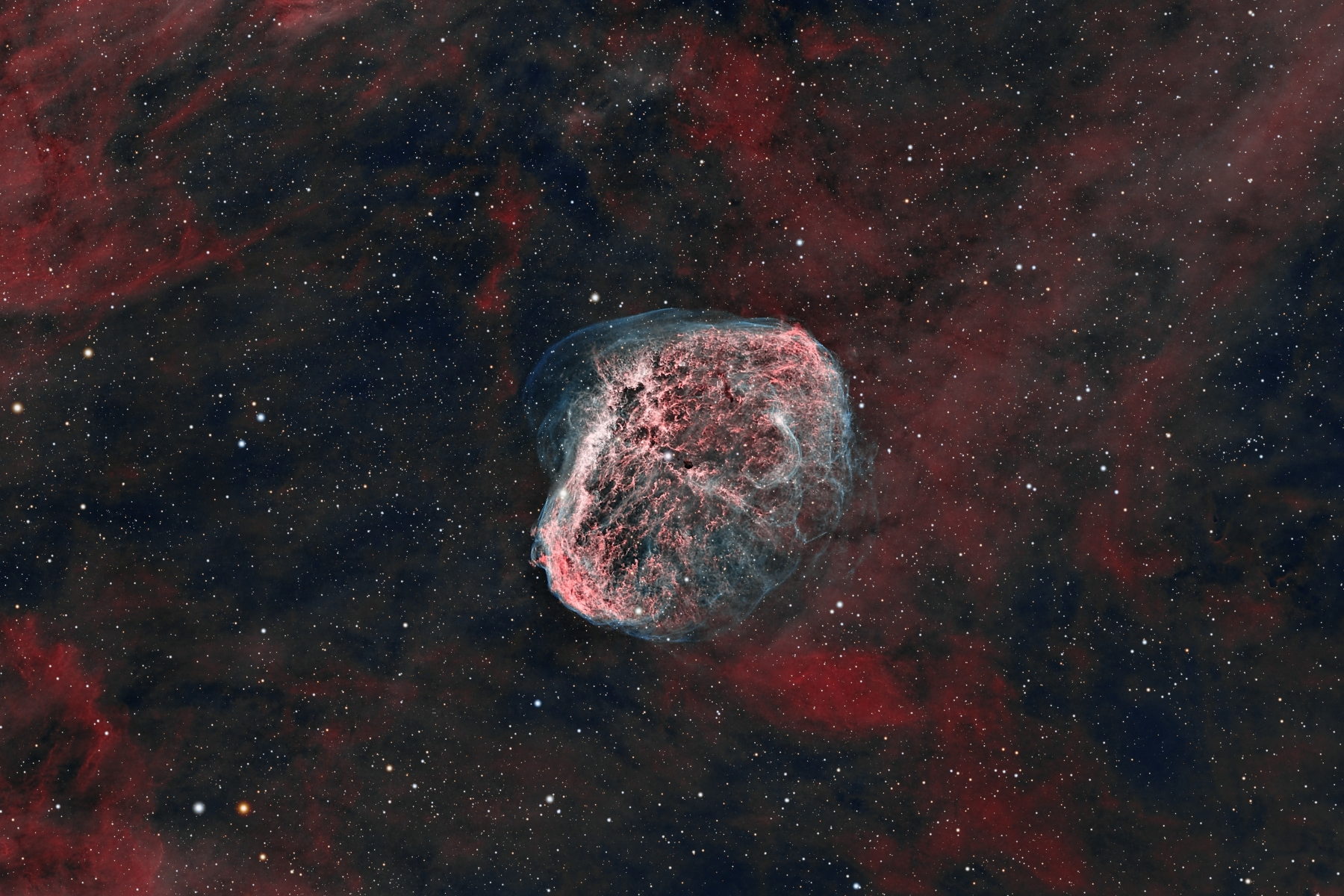
NGC 6888, the Crescent Nebula, an emission nebula located in the constellation Cygnus about 5000 light years away and about 25 light years across – discovered by Willian Herschel in 1792. Photo by club member Tom Engwall, remotely captured at his setup in Southern Spain. Click here for more information about this image.
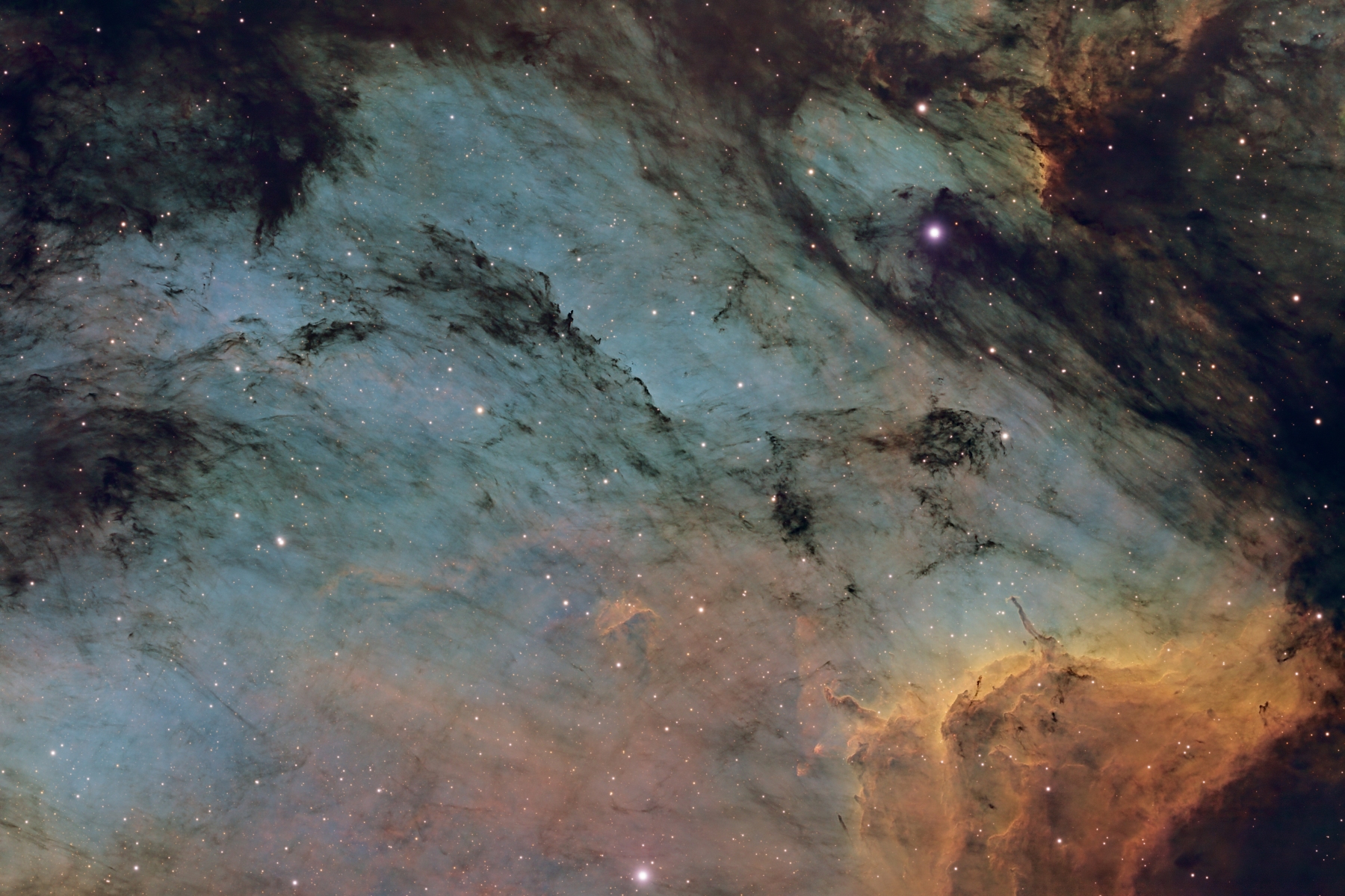
The Pelican Nebula in Cygnus, about 1800 light years away. Remotely captured over 36.7 hours by club member Thomas Engwall in July, 2022 from his setup in Southern Spain. Click here for more information about this image.
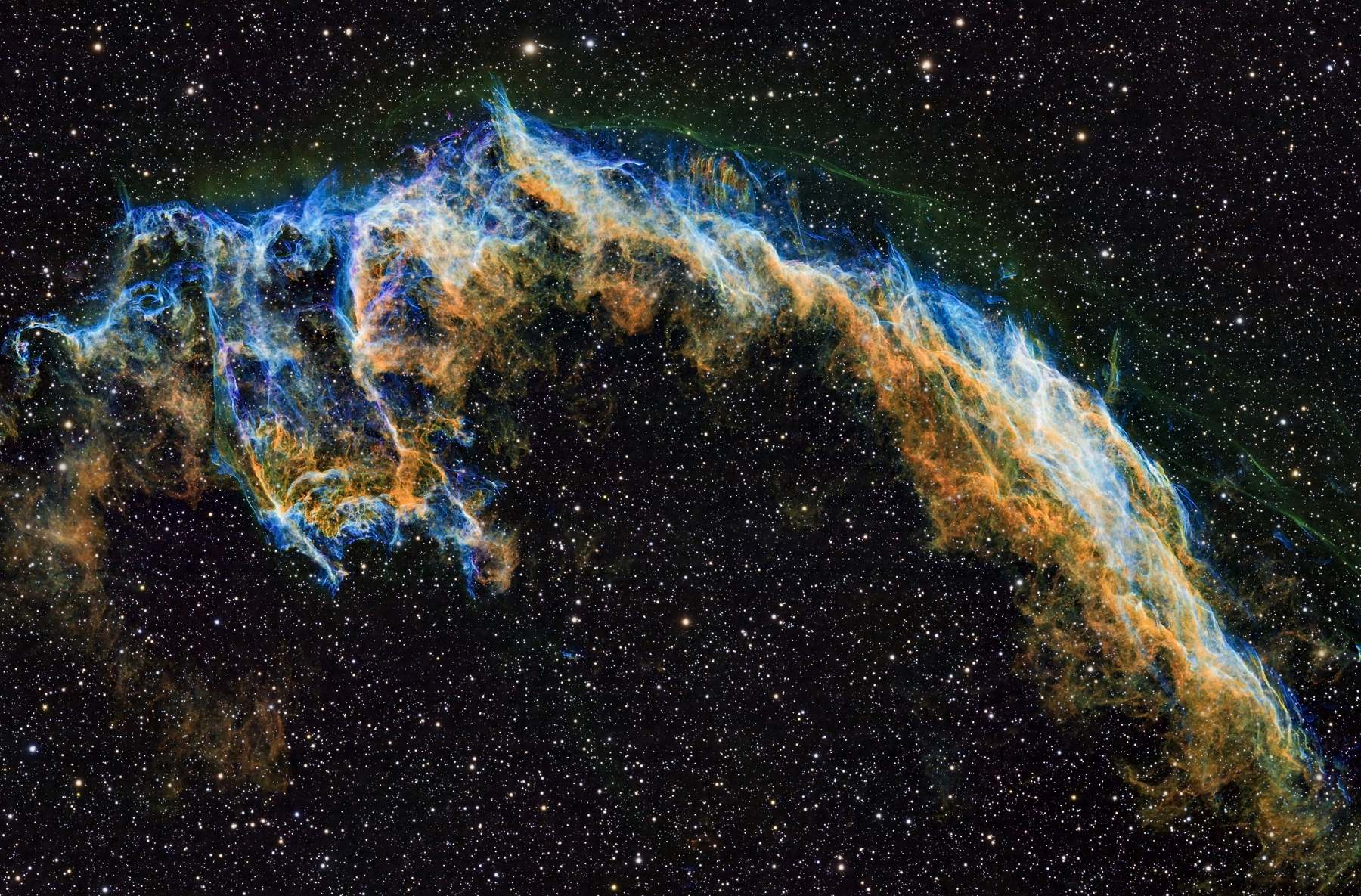
Eastern Veil Nebula, part of the Veil Nebula in Cygnus. Photo by Tom Engwall, from his remote observing site in Castilléjar, Spain. Click here for more information about this image.
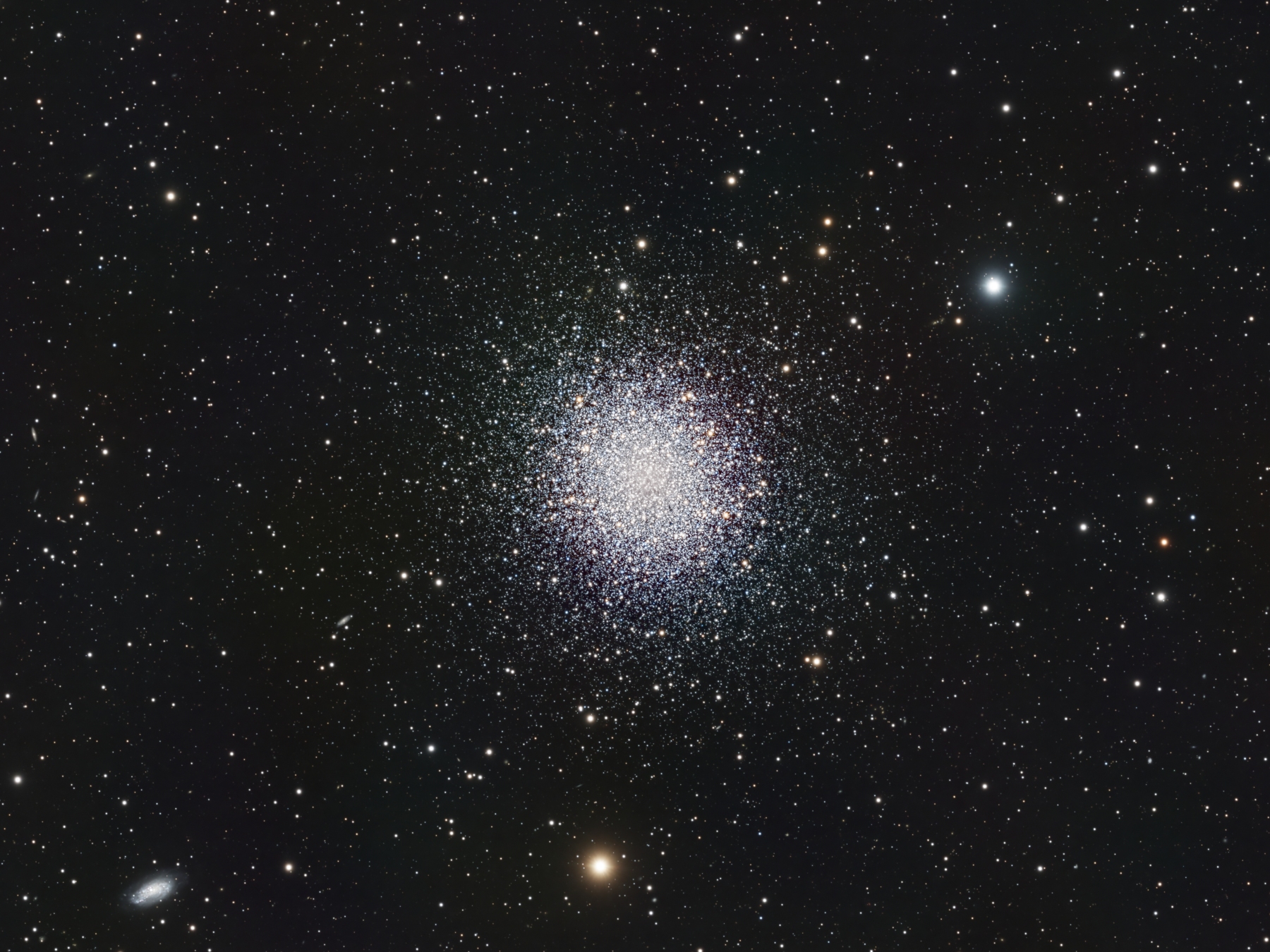
M13, The Great Globular Cluster in Hercules. Photo by club member Thomas Engwall. Click here for more information about this image.
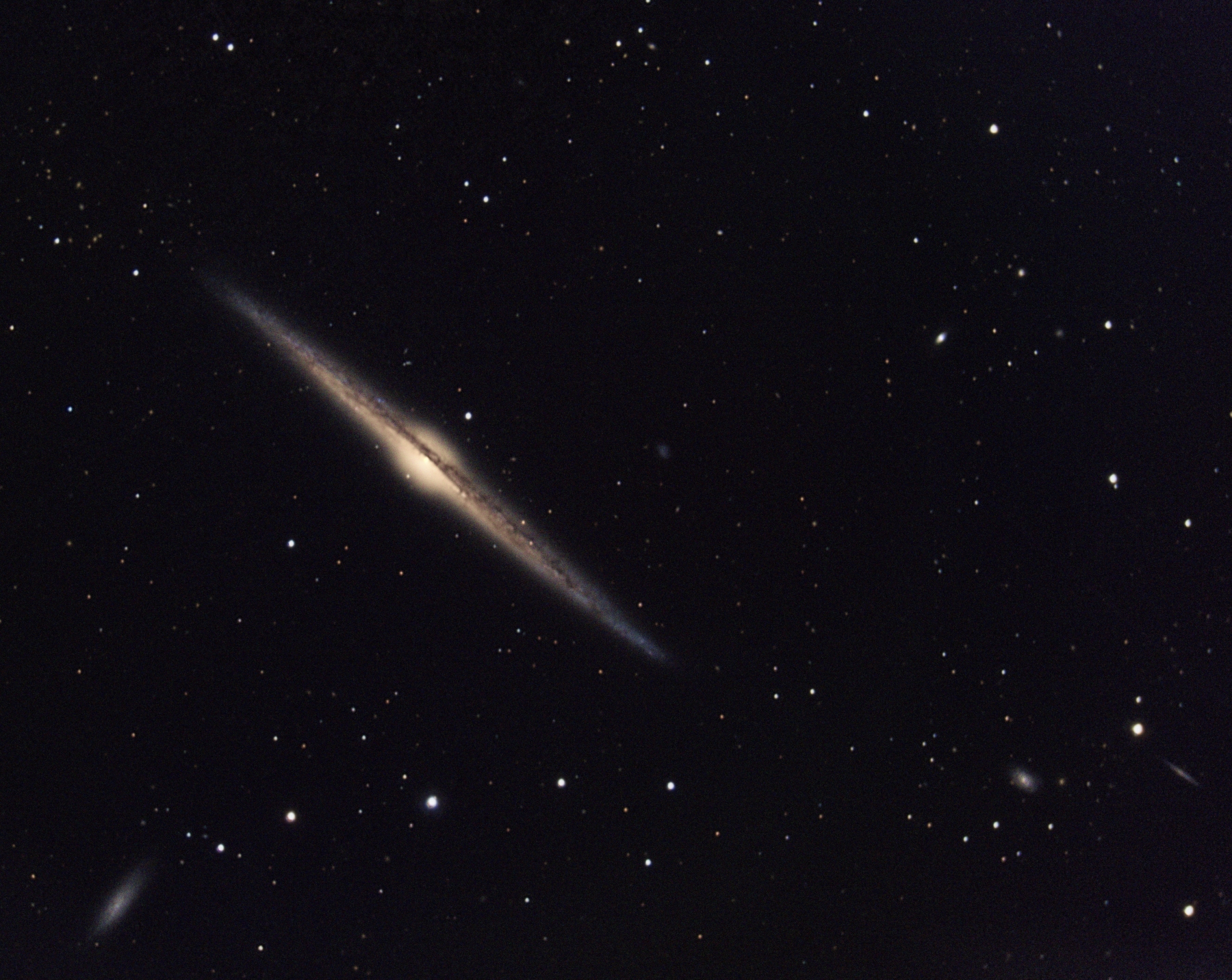
NGC4565, the Needle Galaxy, a spiral galaxy seen edge on in the Coma Berenices constellation. Photo by club member Vince Castello. Click here for more information about this image.
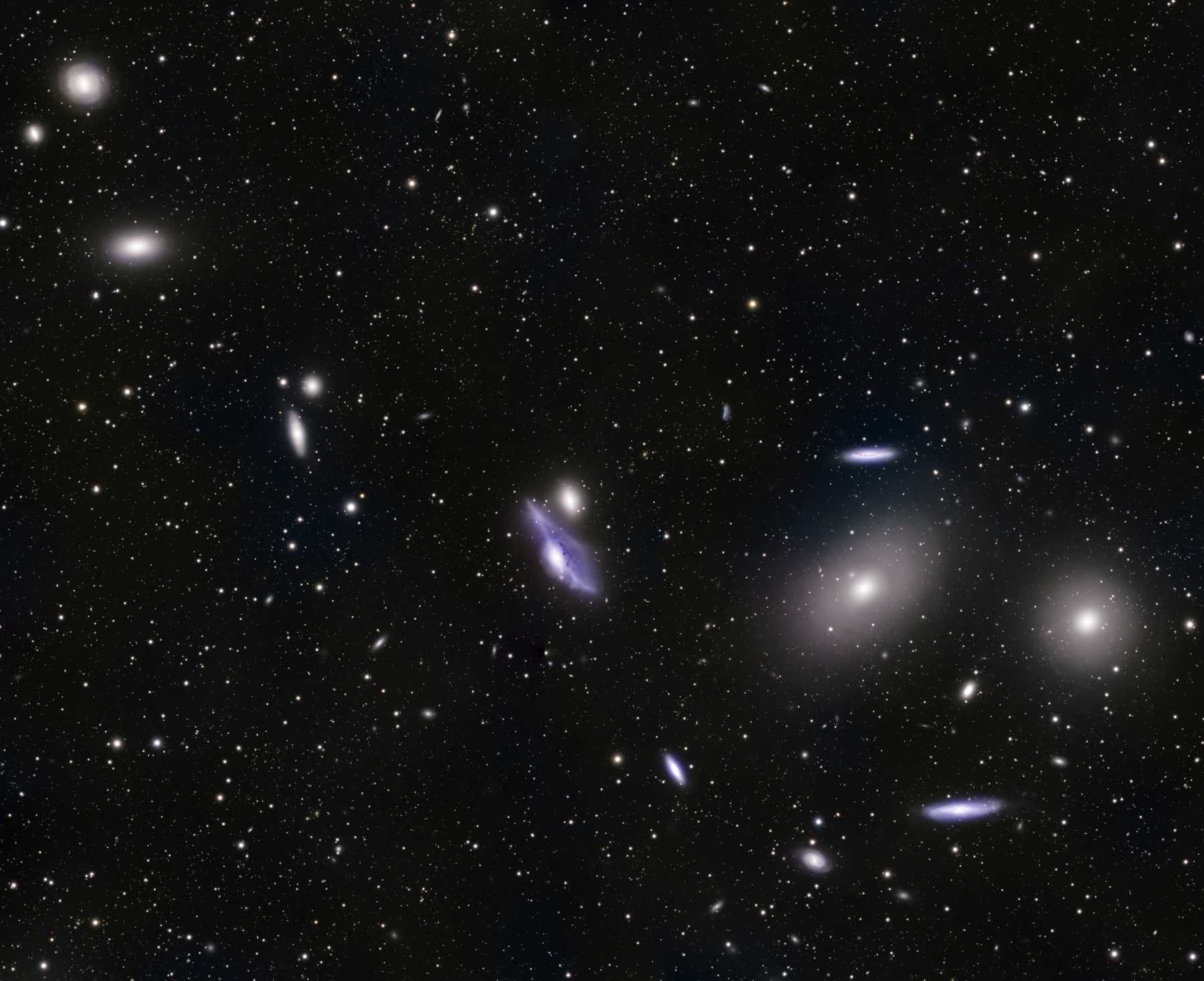
Markarian’s Chain – a string of galaxies in the Virgo Cluster. Photo by club member Tom Engwall from his remote telescope setup in Castilléjar, Spain. Click here for more information about this image.
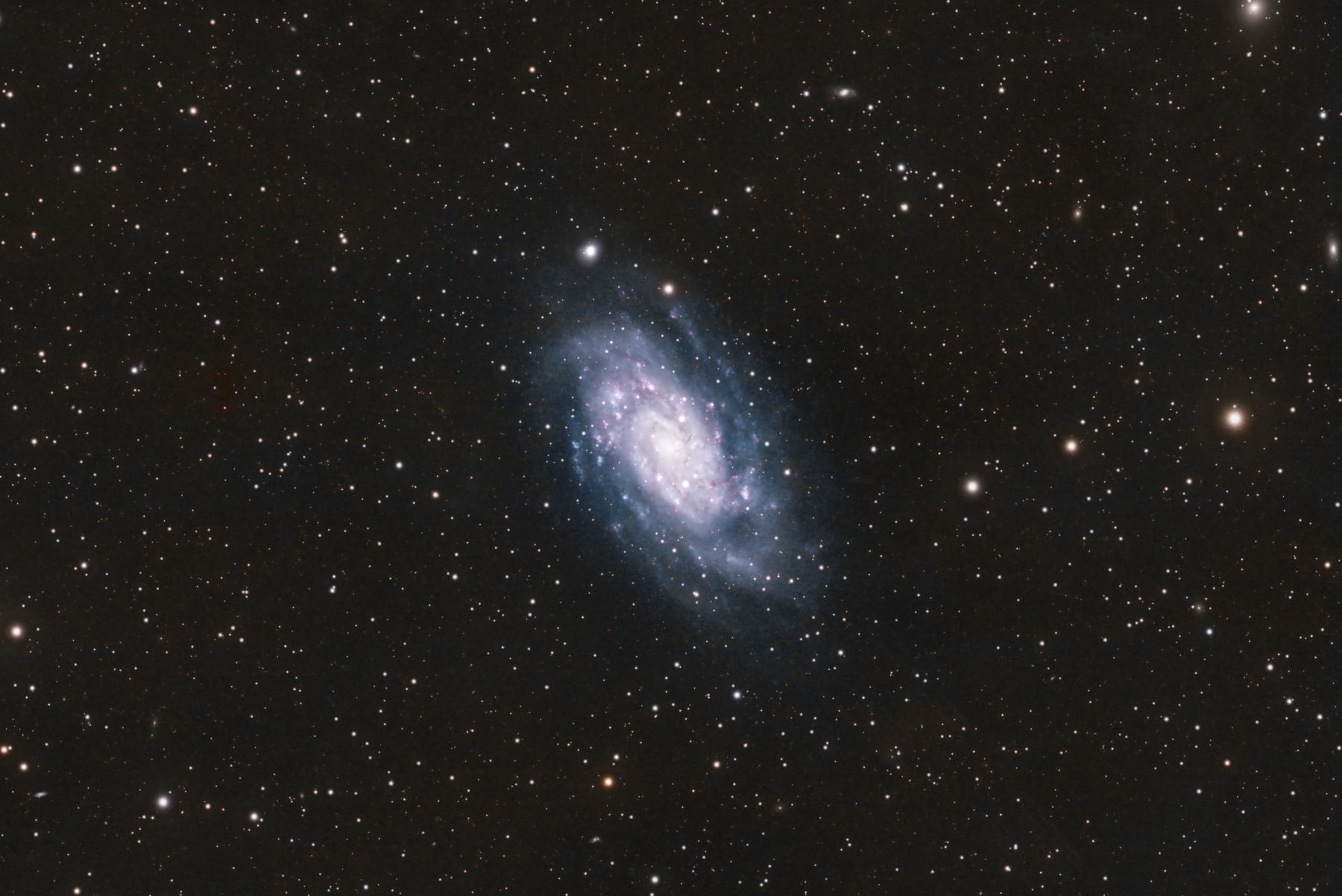
Spiral galaxy NGC 2403 in Camelopardalis. Photo by club member Tom Engwall, captured remotely at the PixelSkies observatory in Southern Spain. Click here for more information about this image.
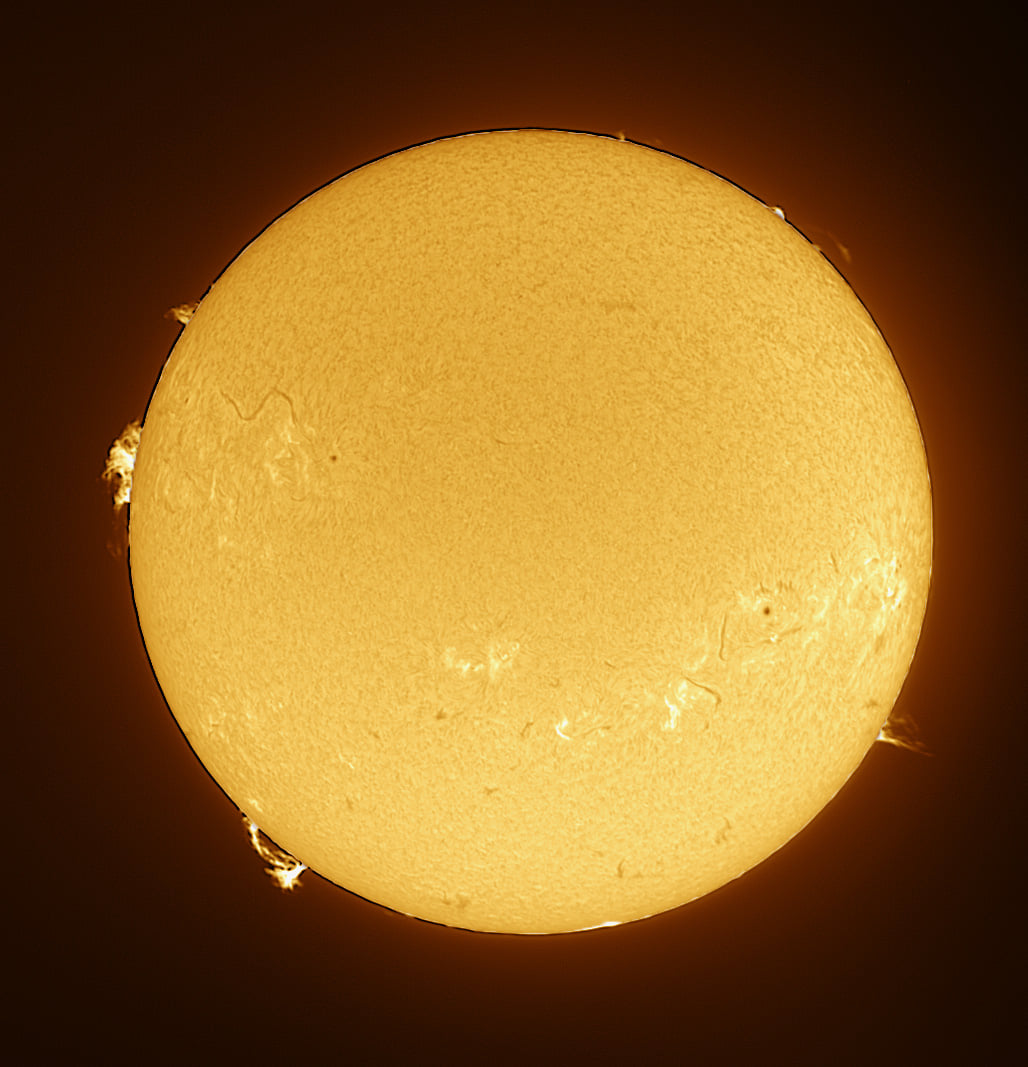
The Sun, showing sunspots and prominences. Photo by club member Knox Worde. Click here for more information about this image.
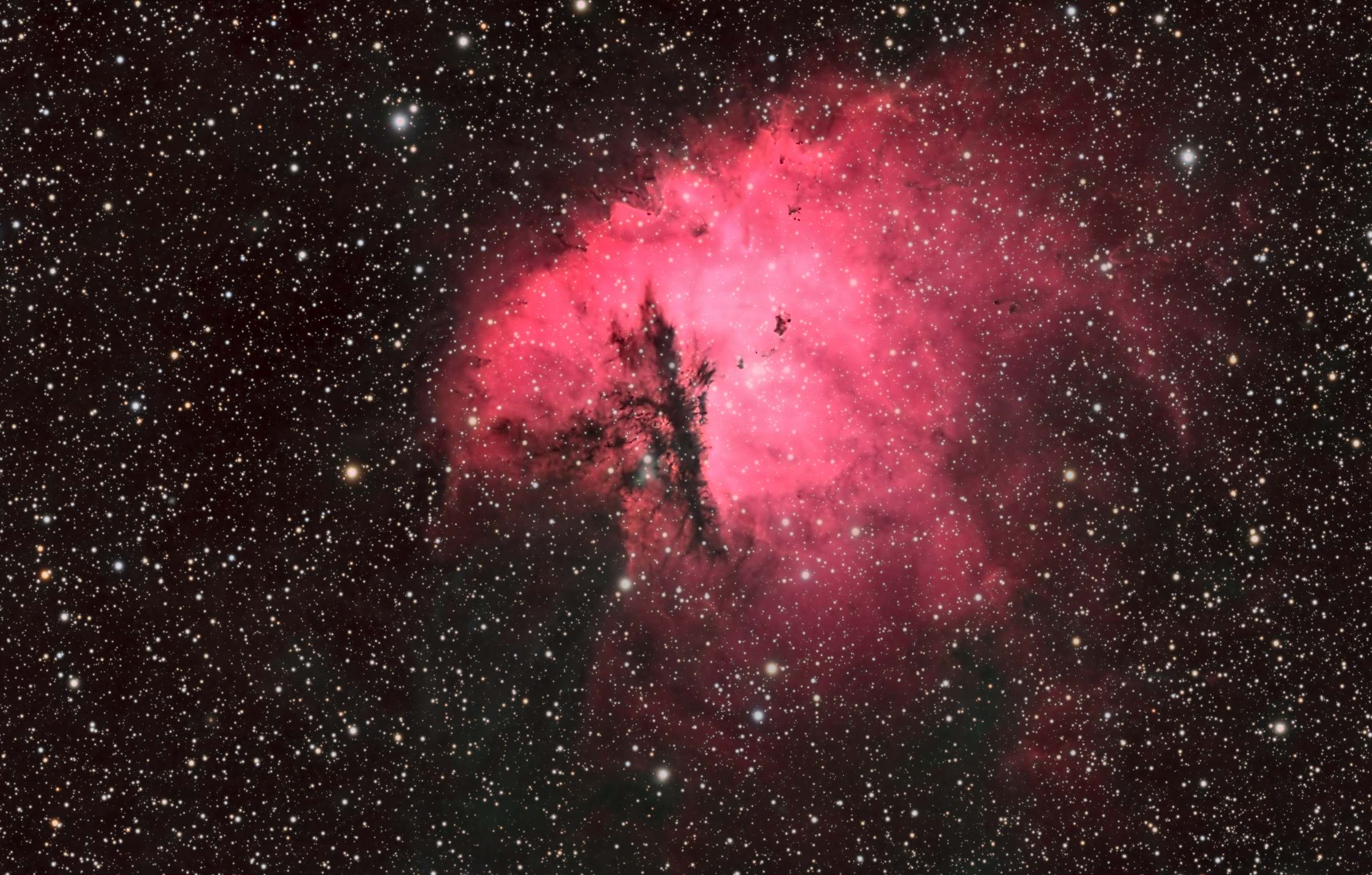
NGC 281, the Pacman Nebula, located in the constellation Cassiopeia, about 9500 light years away. Photo by club member Tom Engwall, remotely from Castilléjar, Spain. Click here for more information about this image.
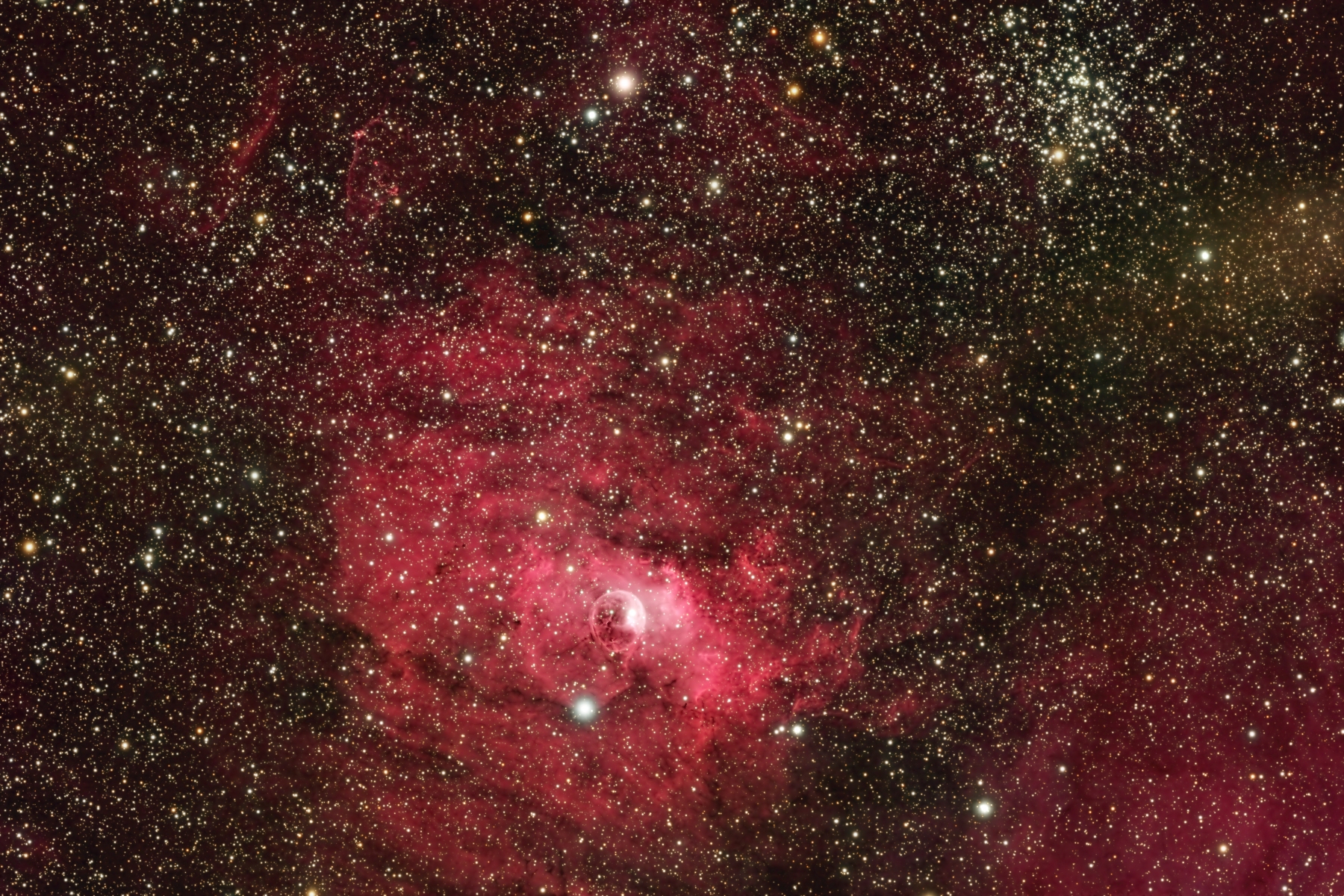
NGC 7635, The Bubble Nebula captured by club member Tom Engwall, from his remote observing site in Castilléjar, Spain. Click here for more information about this image.
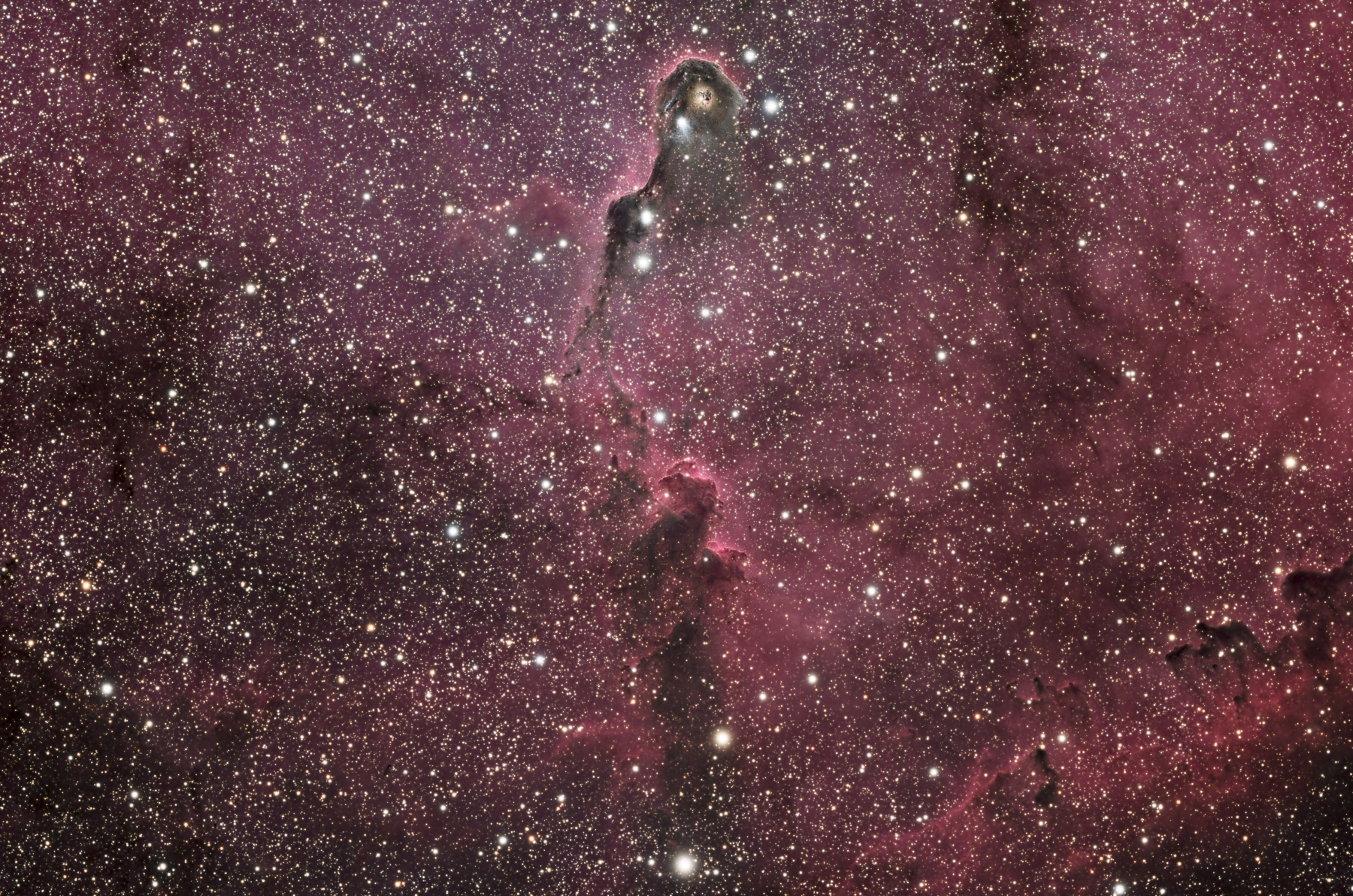
IC1396, Elephant Trunk Nebula in the constellation Cepheus about 2,400 light years from Earth. Photo by club member Tom Engwall, with remotely operated setup at PixelSkies in southern Spain. Click here for more information about this image.
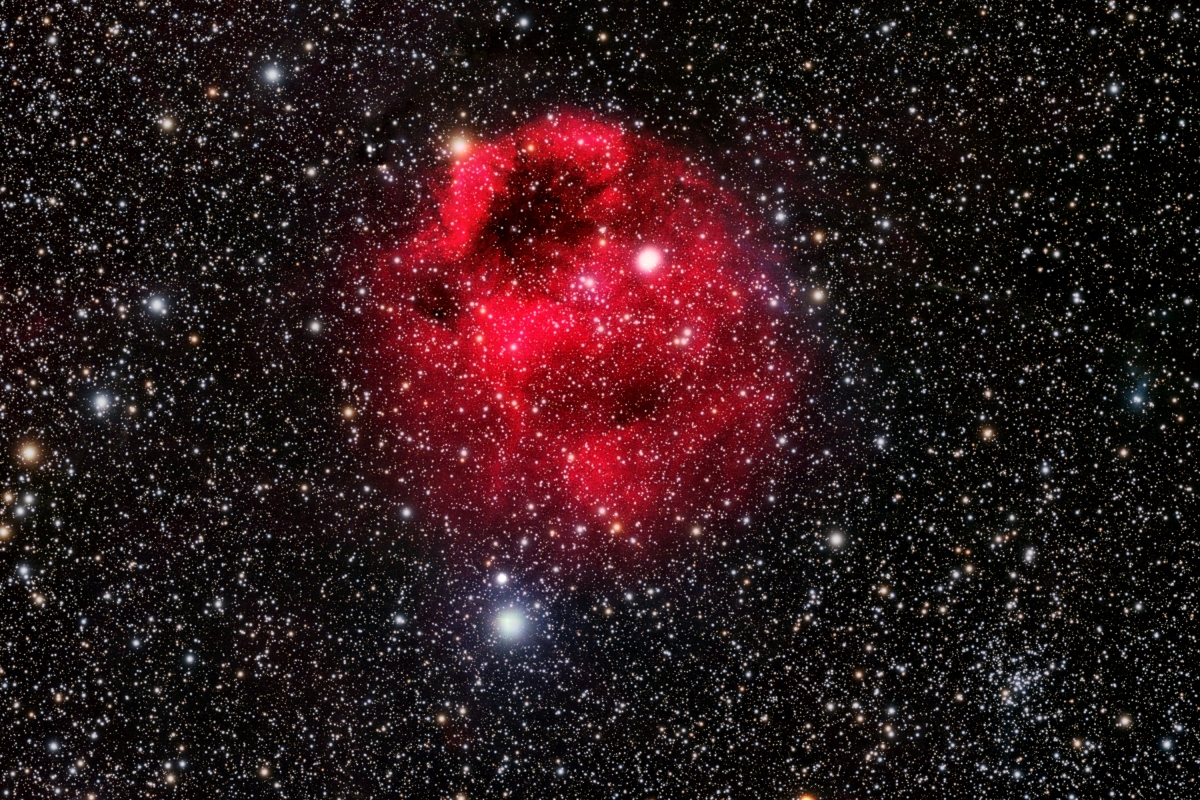
Sh2-173, otherwise known as Phantom of the Opera, in the constellation Cassiopeia about 8000 light years away. Photo by club member Tom Engwall, remotely from PixelSkies observatory in Southern Spain. Click here for more information about this image.
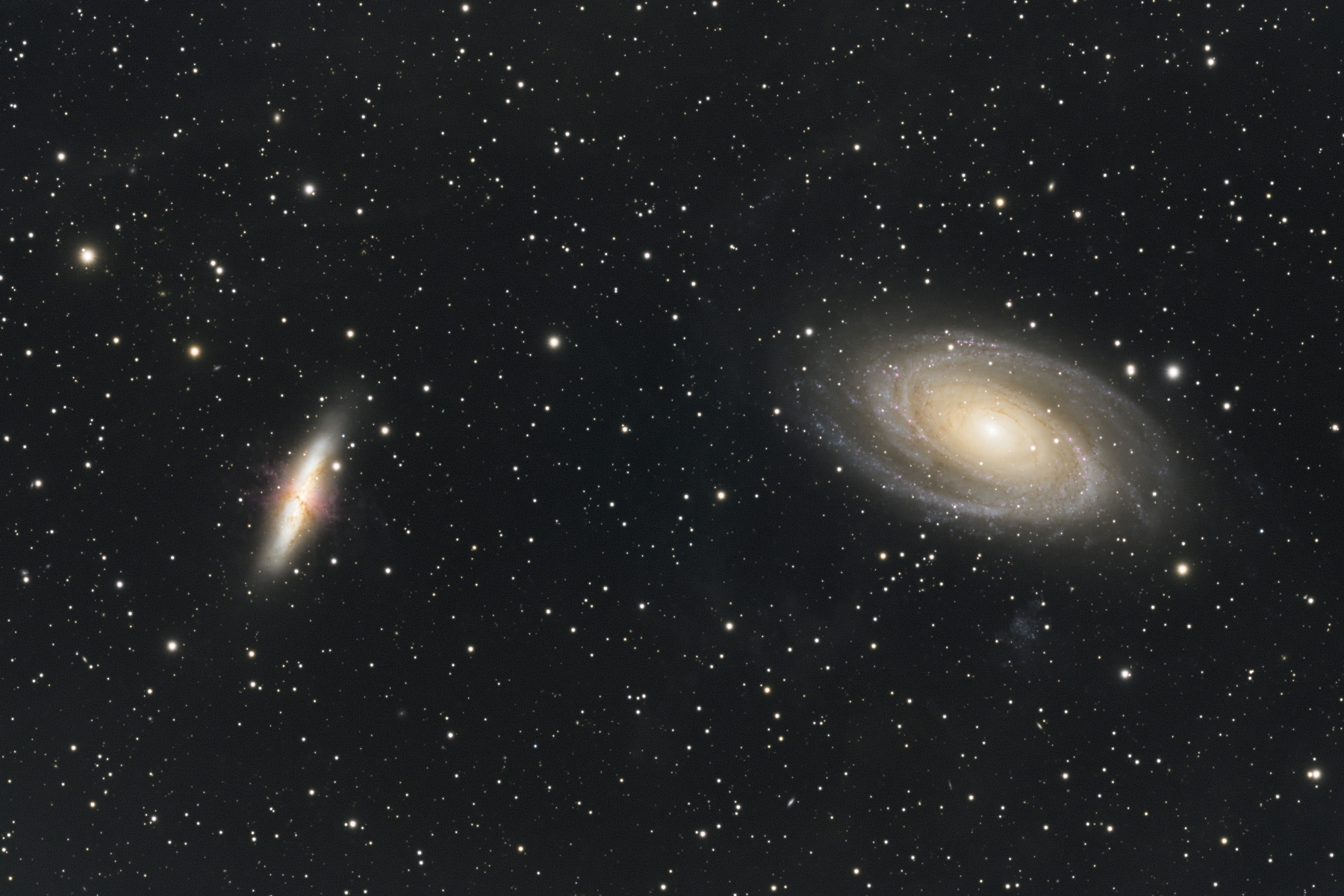
M81 and M82 captured by club member Tom Engwall, remotely from Castillejar, Granada Spain. Click here for more information about this image.
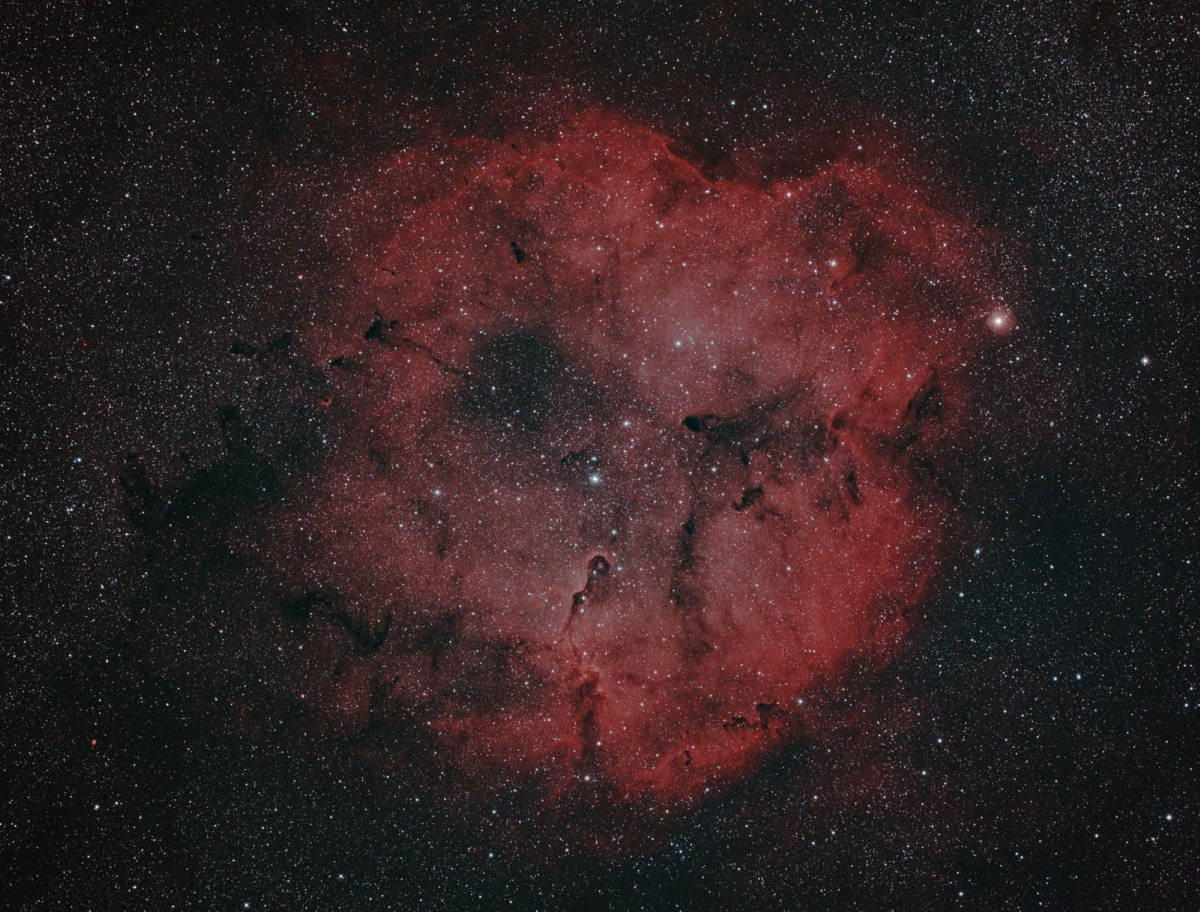
IC1396 gas cloud in the Constellation Cepheus. Photo by club member Knox Worde. Click here for more information about this image.
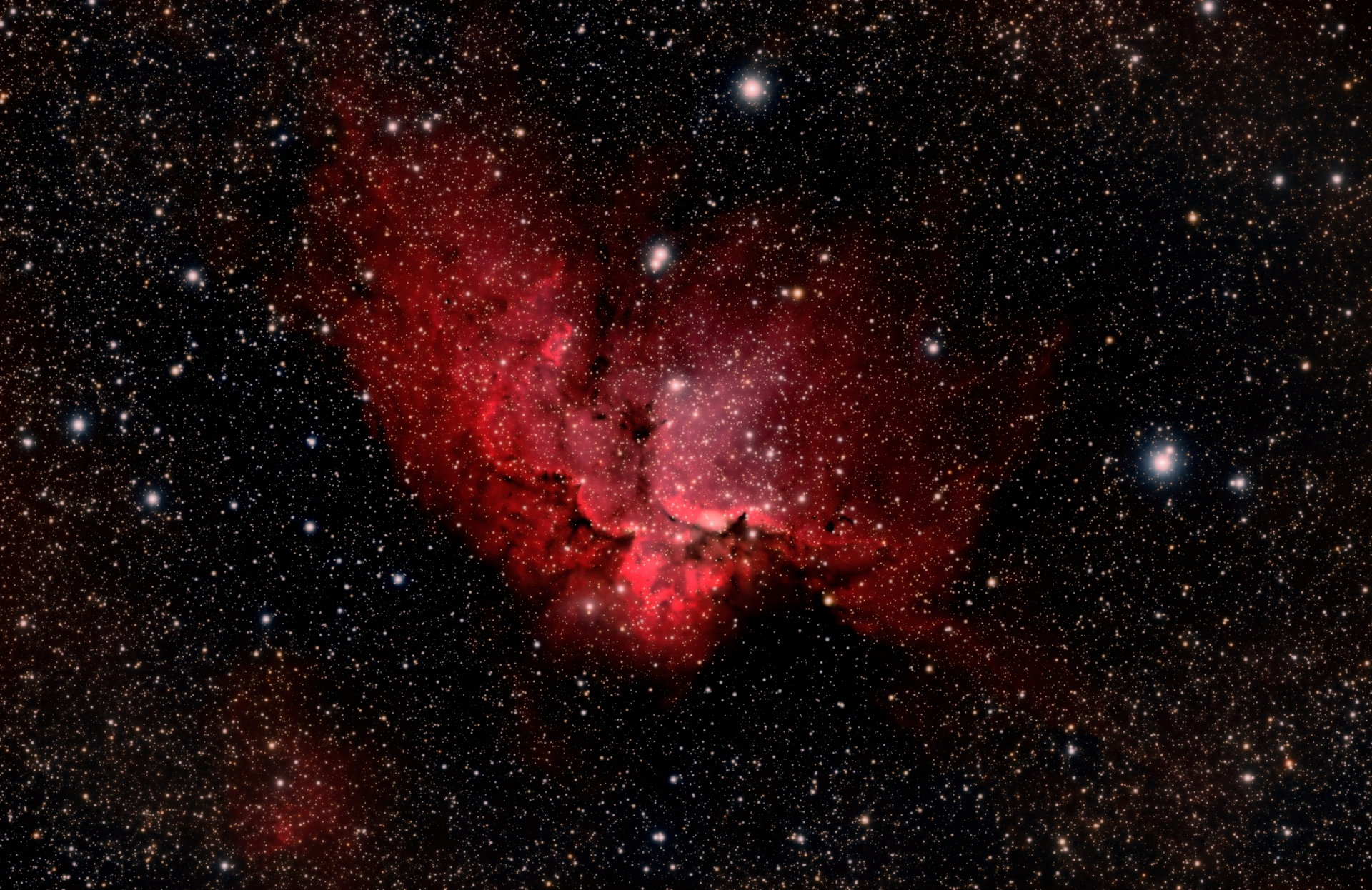
NGC 7380 The Wizard Nebula, remotely captured at PixelSkies Observatory in Castillejar, Spain. Photo by club member Tom Engwall. Click here for more information about this image.
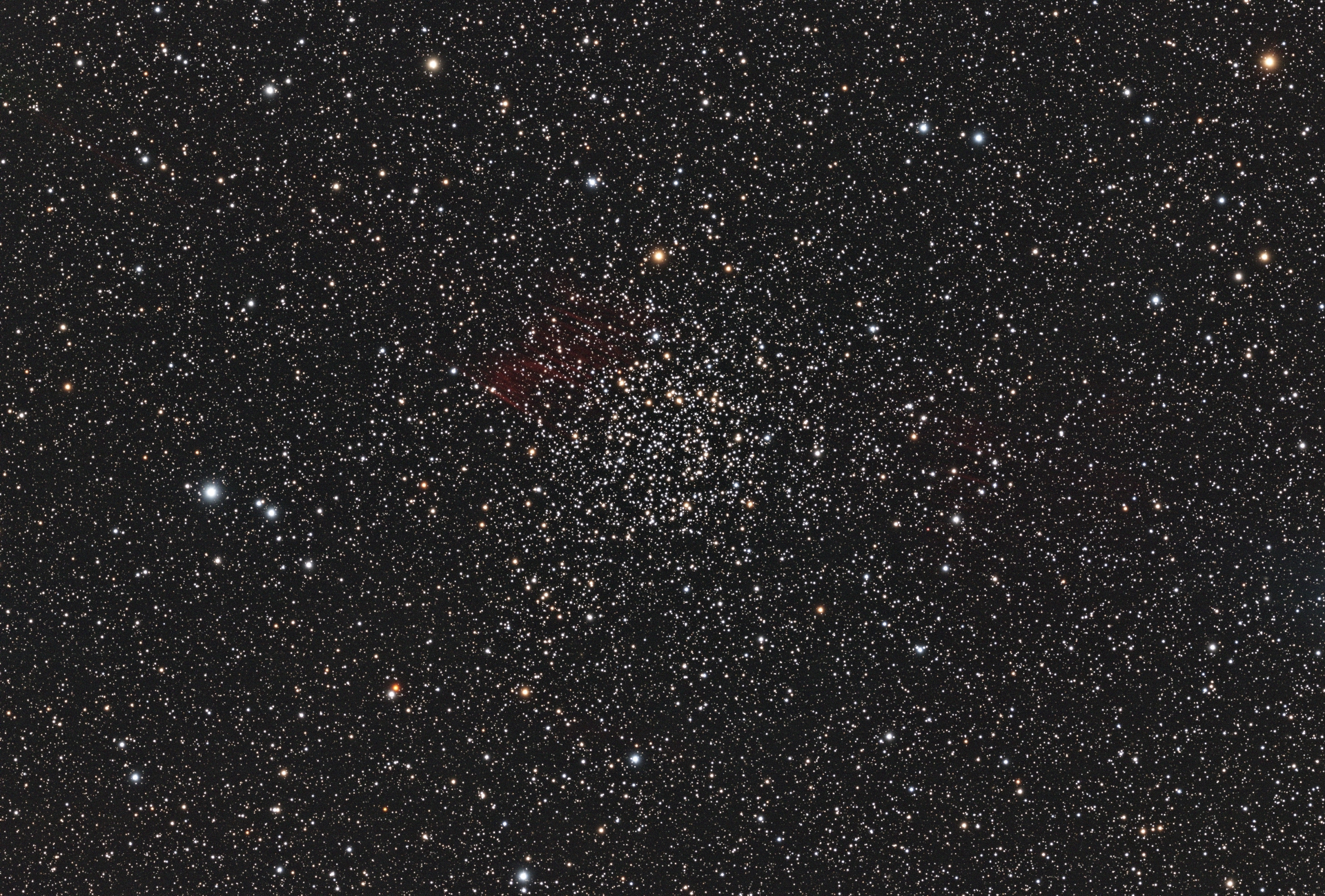
NGC 7789 Caroline’s Rose, remotely captured at PixelSkies Observatory in Castillejar, Spain. Photo by club member Tom Engwall. Click here for more information about this image.
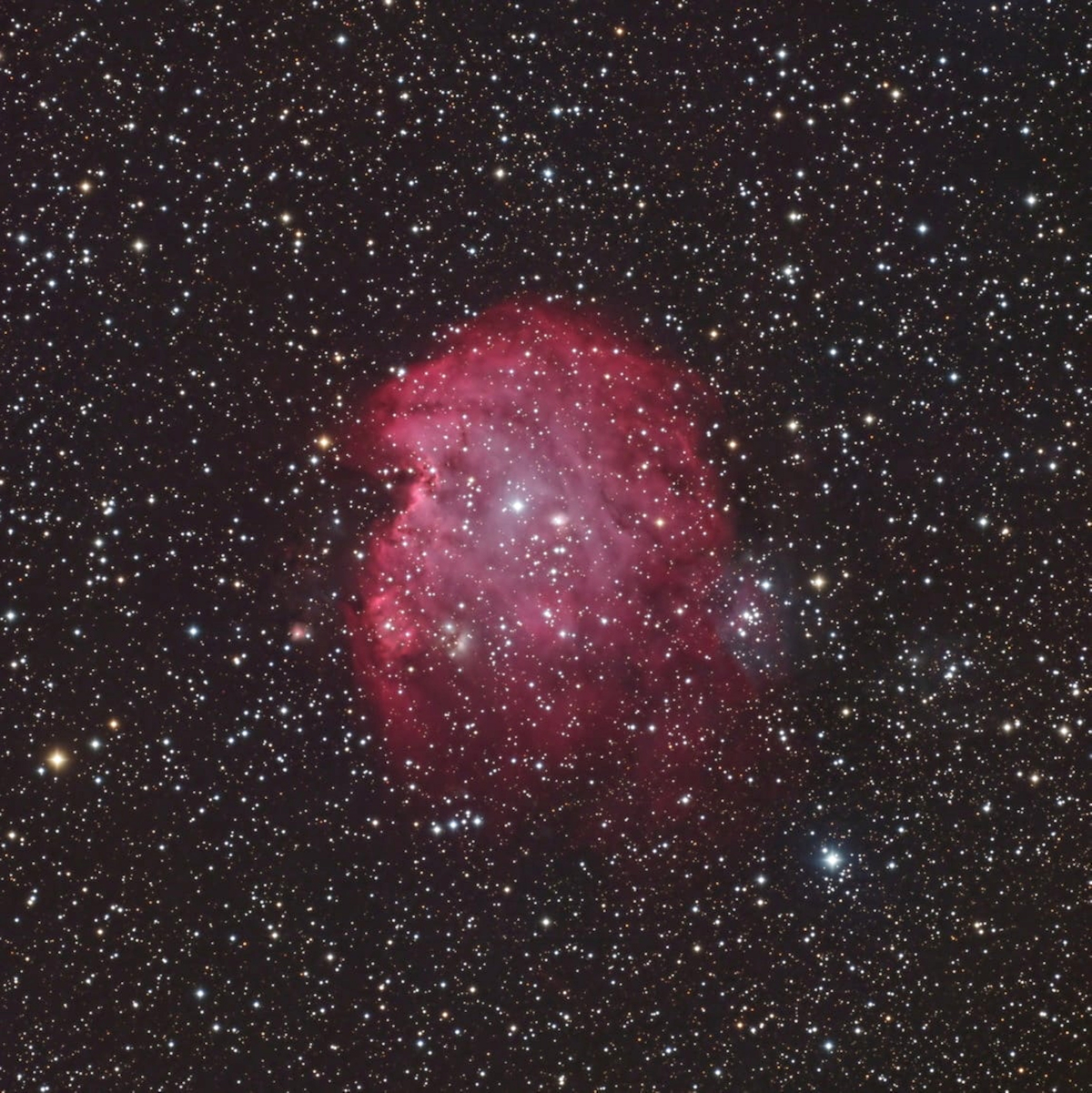
NGC2174, Monkey Head Nebula in the northern edge of the Orion Constellation. Photo by club member Knox Worde. Click here for more information about this image.
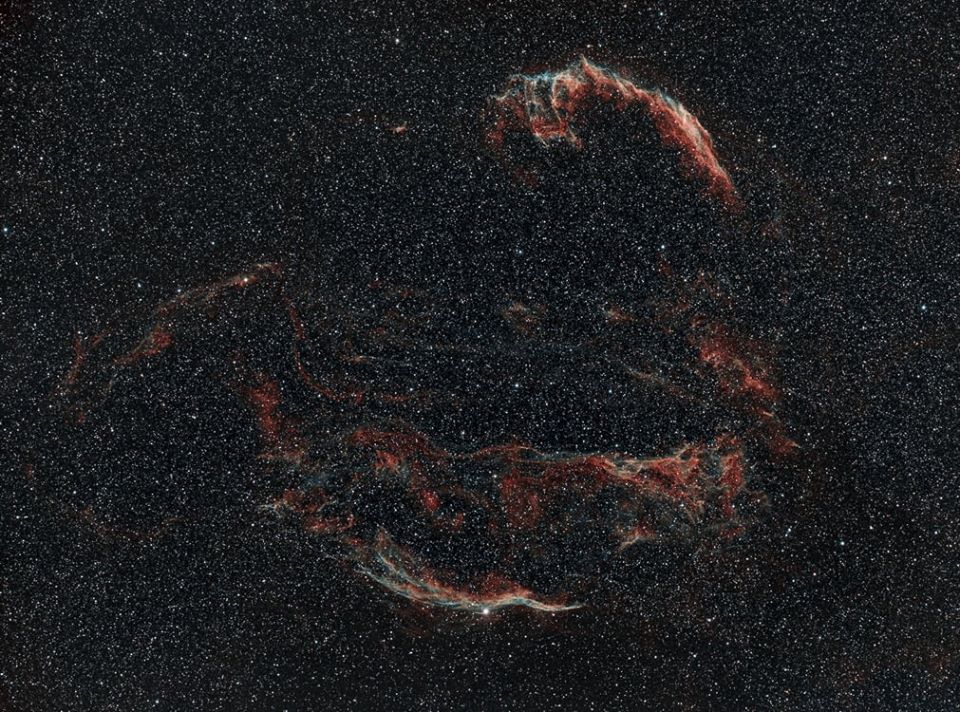
Pickering’s Triangle, in the Veil Nebula. Photo by club member Knox Worde. Click here for more information about this image.
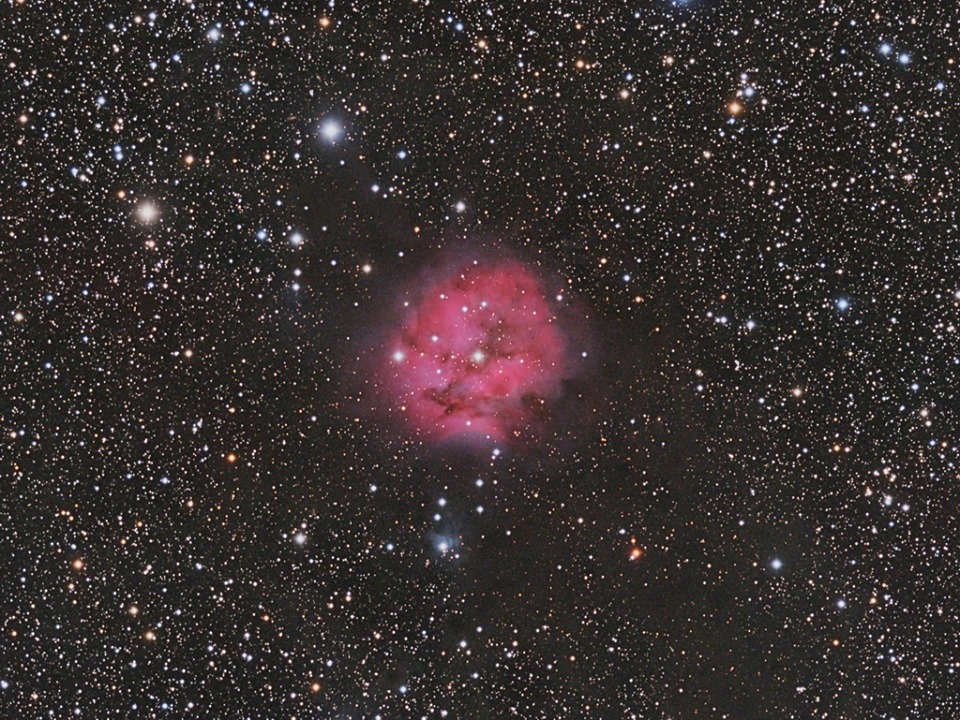
Cocoon Nebula in the constellation Cygnus. Photo by club member Knox Worde at the October, 2019 Staunton River Star Party. Click here for more information about this image.
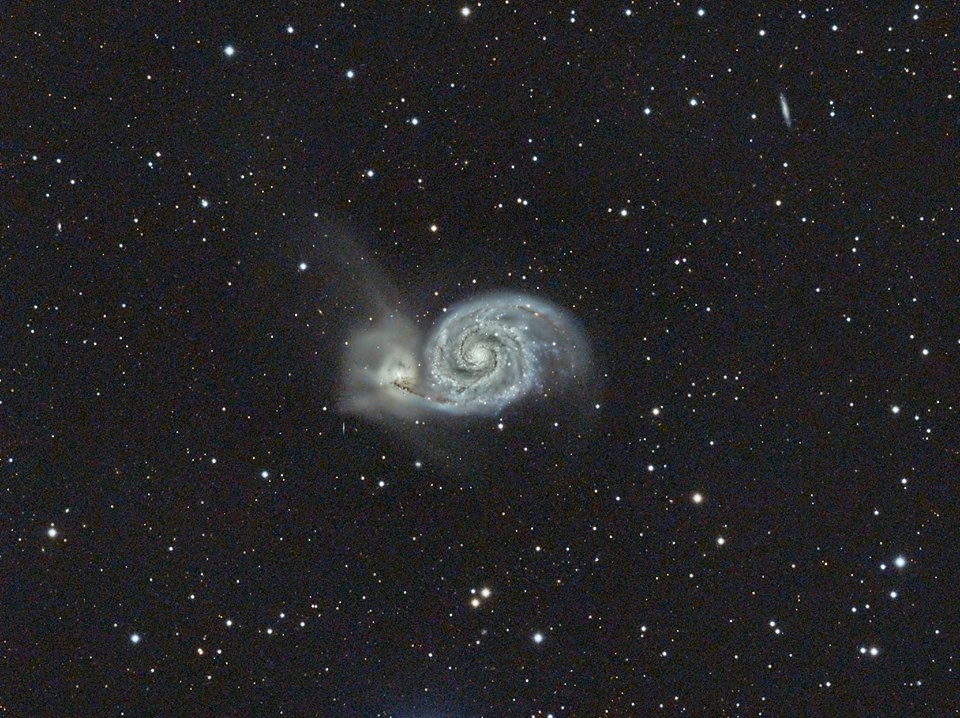
M51, the Whirlpool Galaxy, in the constellation Canes Venatici. Photo by club member Knox Worde. Click here for more information about this image.
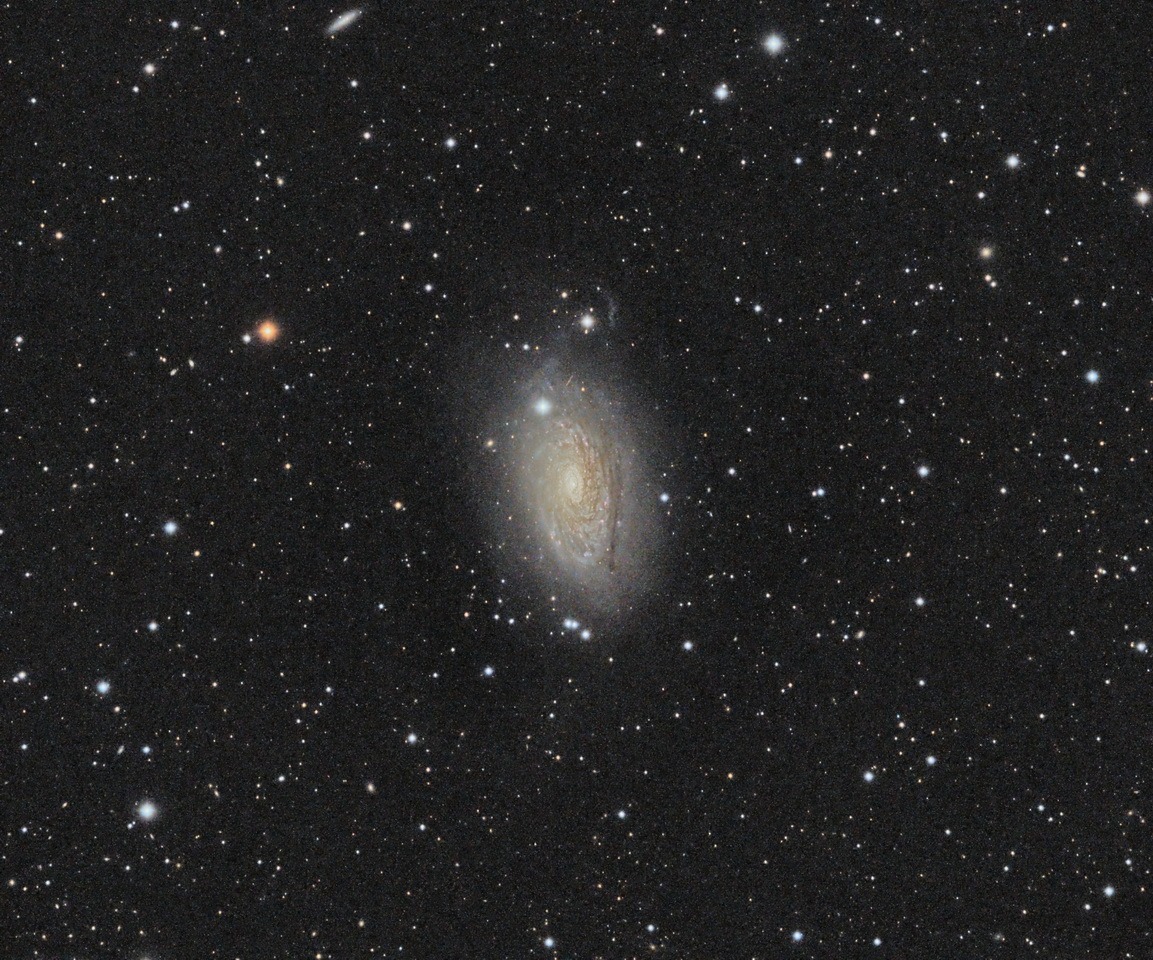
M63, the Sunflower Galaxy, in the constellation Canes Venatici. Photo by club member Knox Worde. Click here for more information about this image.
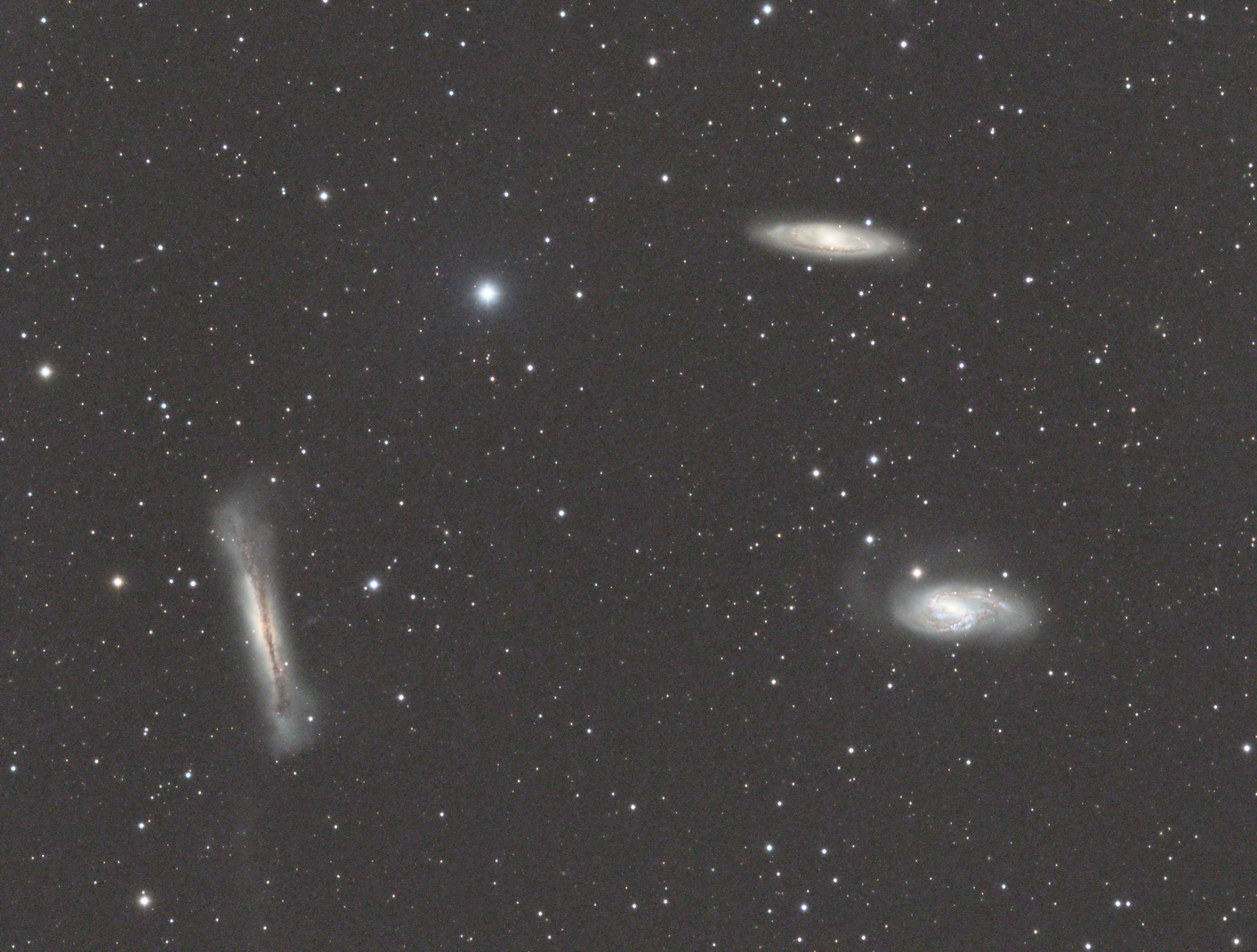
The Leo Triplet, three galaxies in the constellation Leo. Photo by club member Knox Worde. Click here for more information about this image.
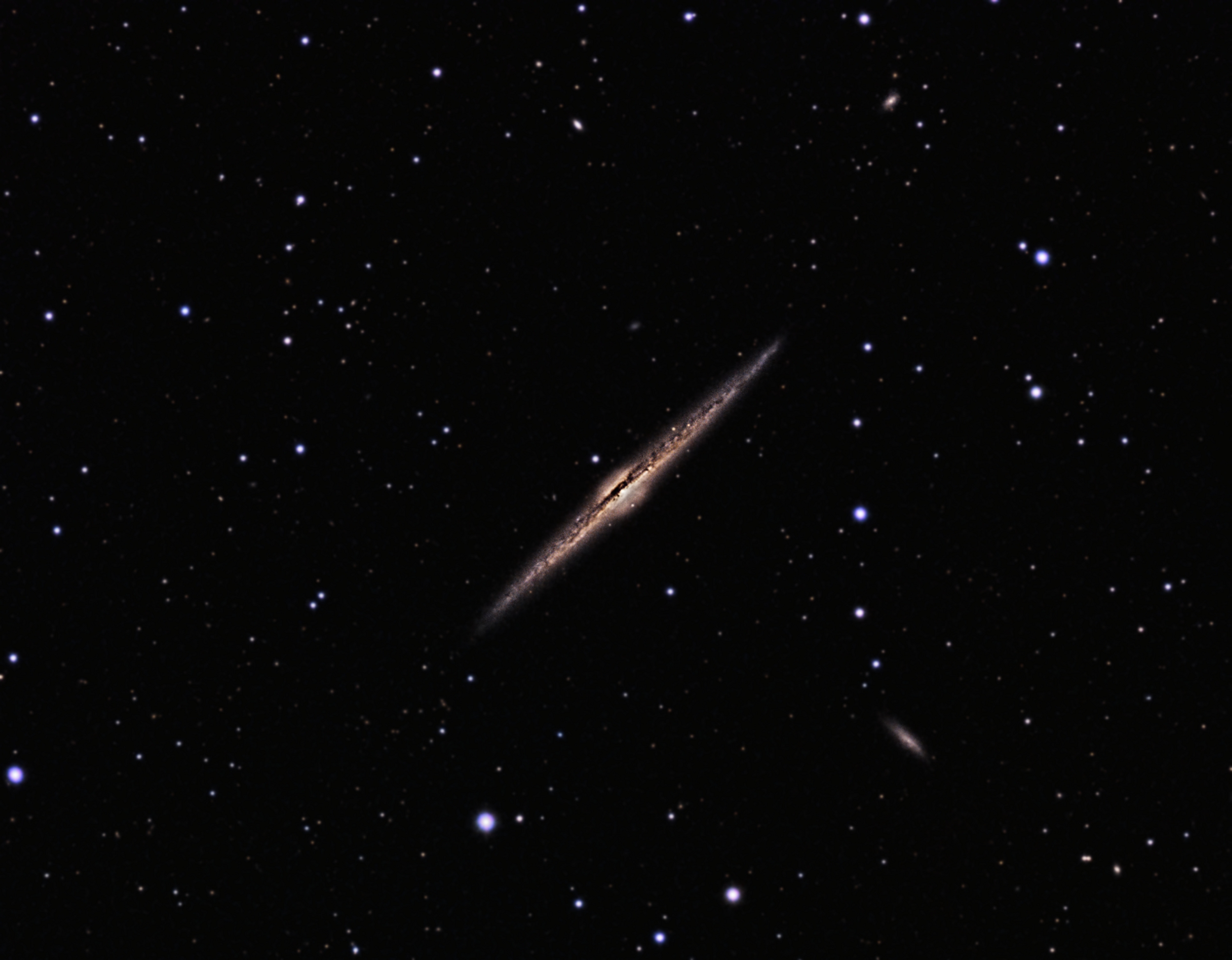
NGC 4565 Needle Galaxy in the constellation Coma Berenices. Photo by club member Dennis Wilde, Transit Dreams Observatory. Click here for more information about this image.
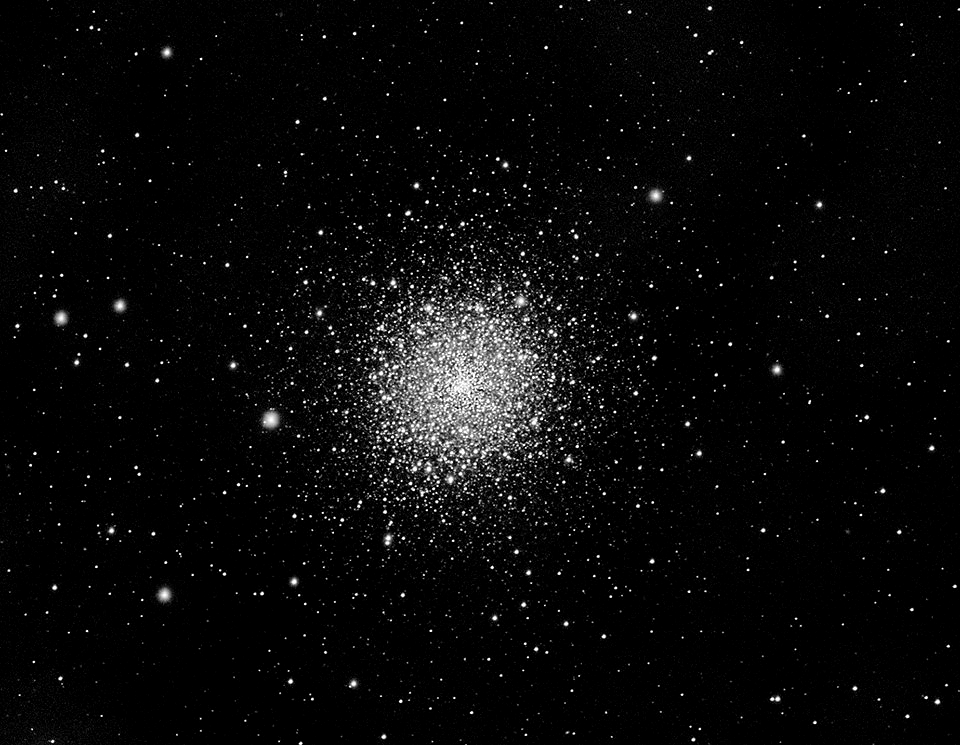
M92 globular cluster in the constellation Hercules. Photo by club member Dennis Wilde, Transit Dreams Observatory. Click here for more information about this image.
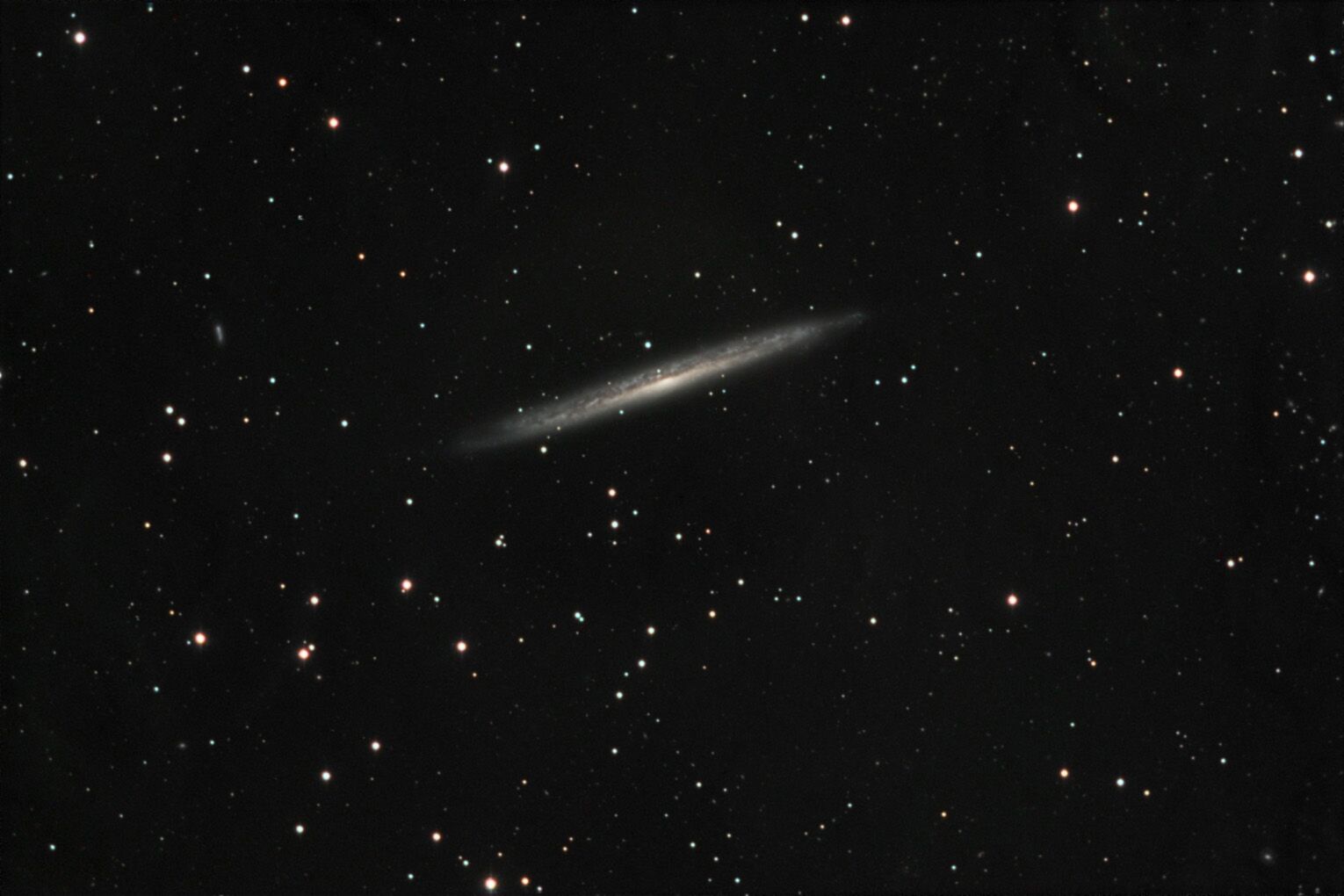
NGC 5907 Splinter Galaxy, photo by club member Ken Westall. Click here for more information about this image.
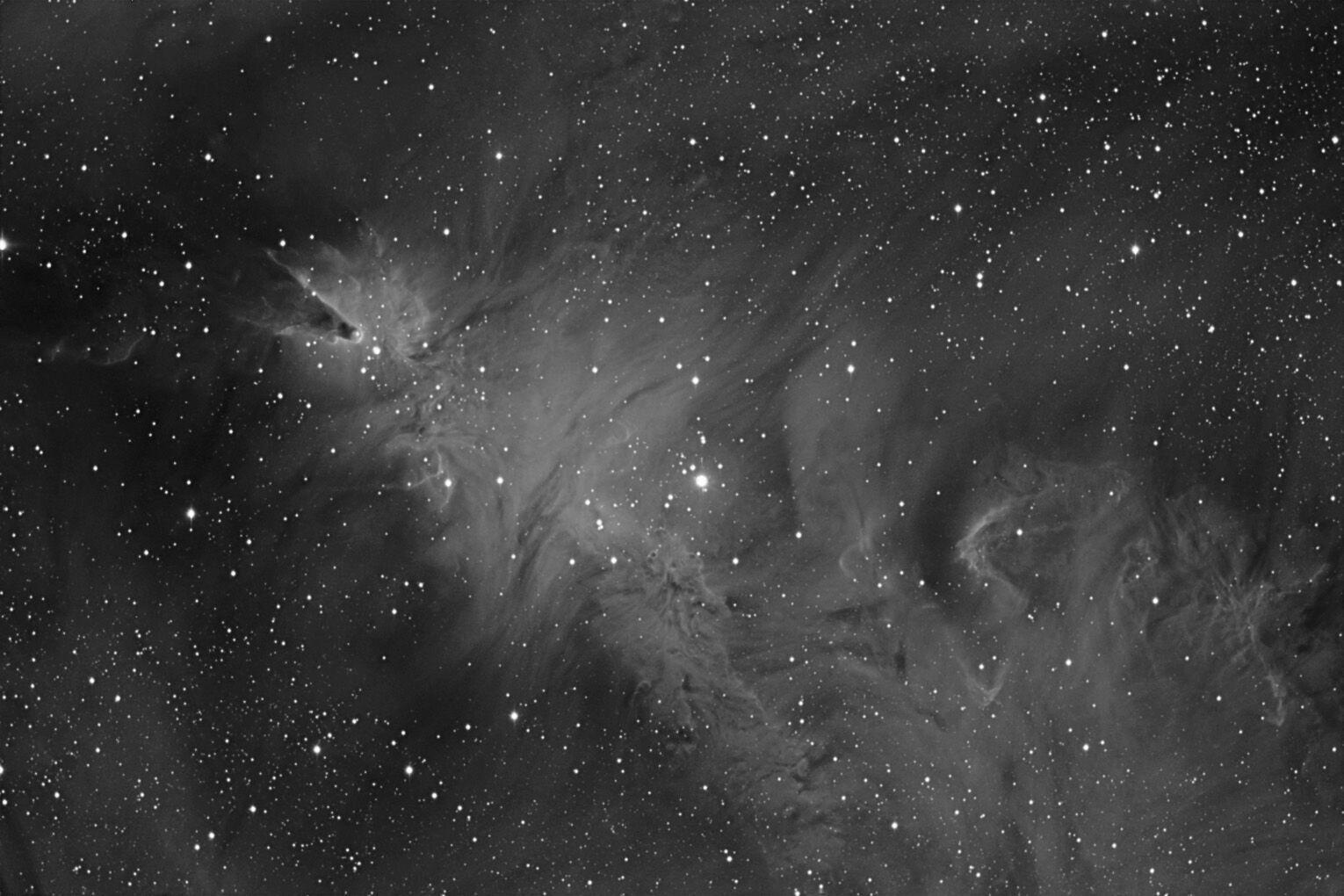
NGC 2264, the Christmas Tree Cluster in the constellation Monoceros. Photographed by club member Ken Westall, using a Hydrogen-Alpha filter. Click here for more information about this image.
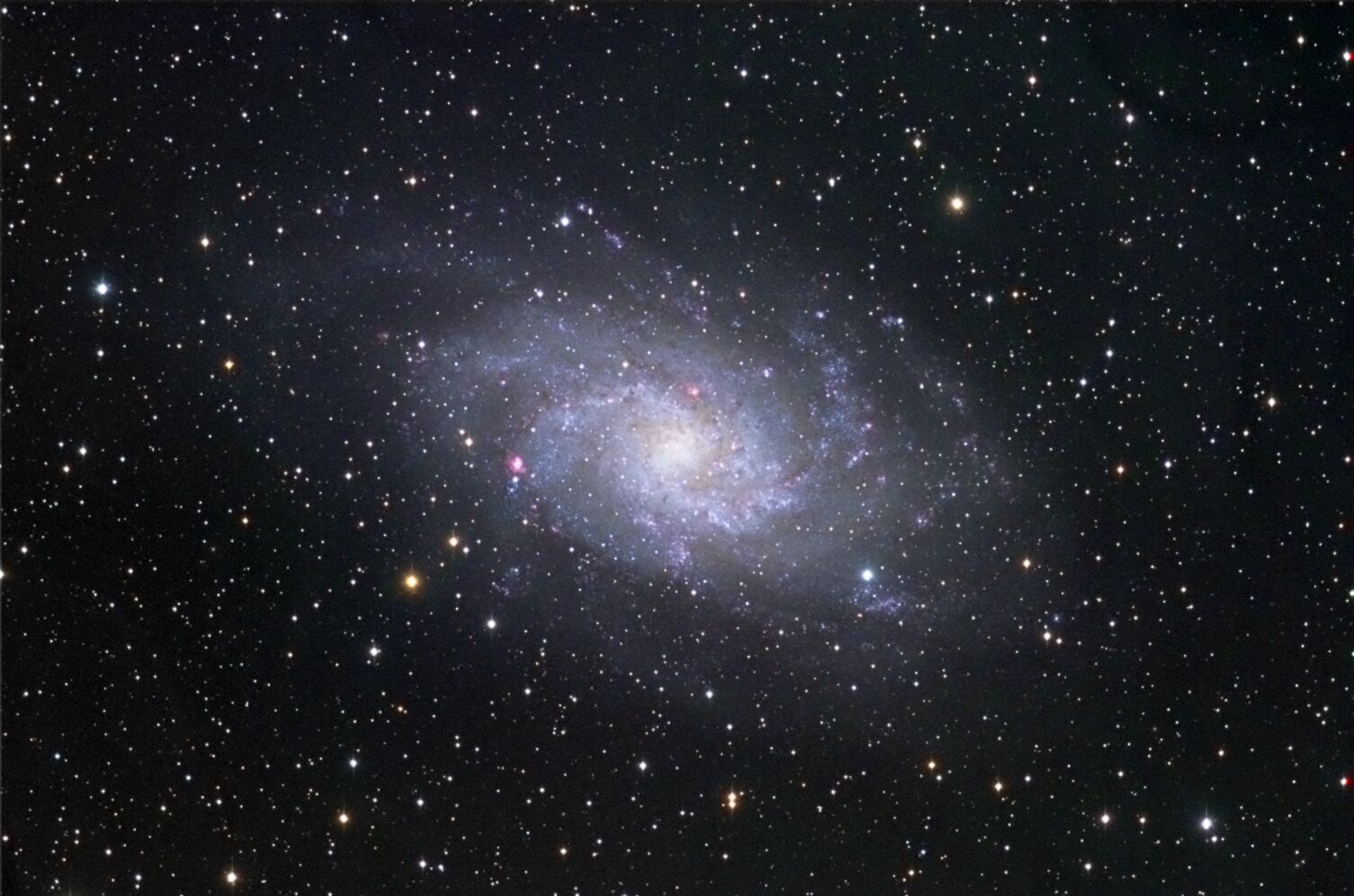
M33, the Triangulum Galaxy. Photo by club member Ken Westall. Click here for more information about this image.
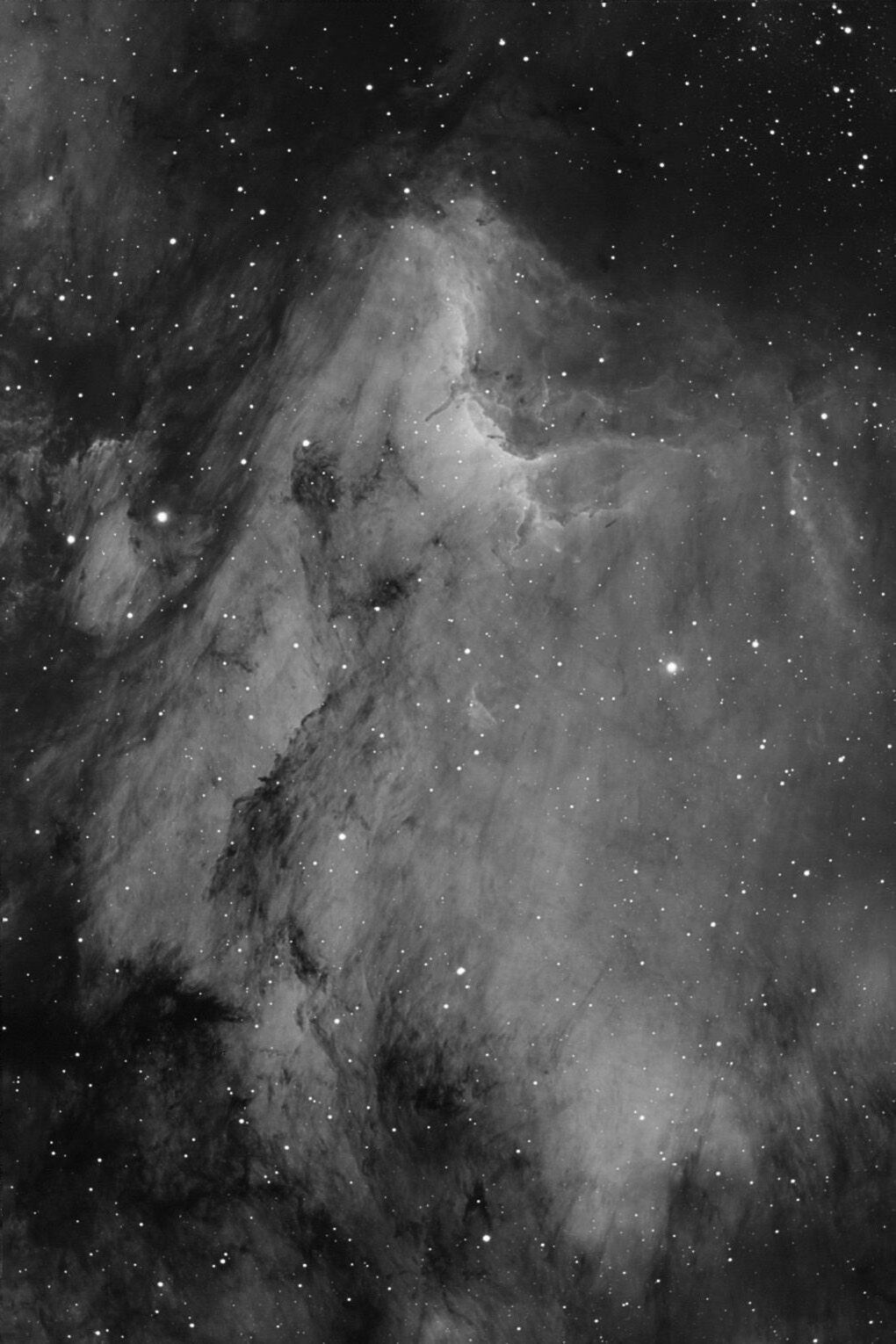
LBN 350, the Pelican Nebula in the constellation Cygnus, photographed by club member Ken Westall, using a Hydrogen-Alpha filter. Click here for more information about this image.
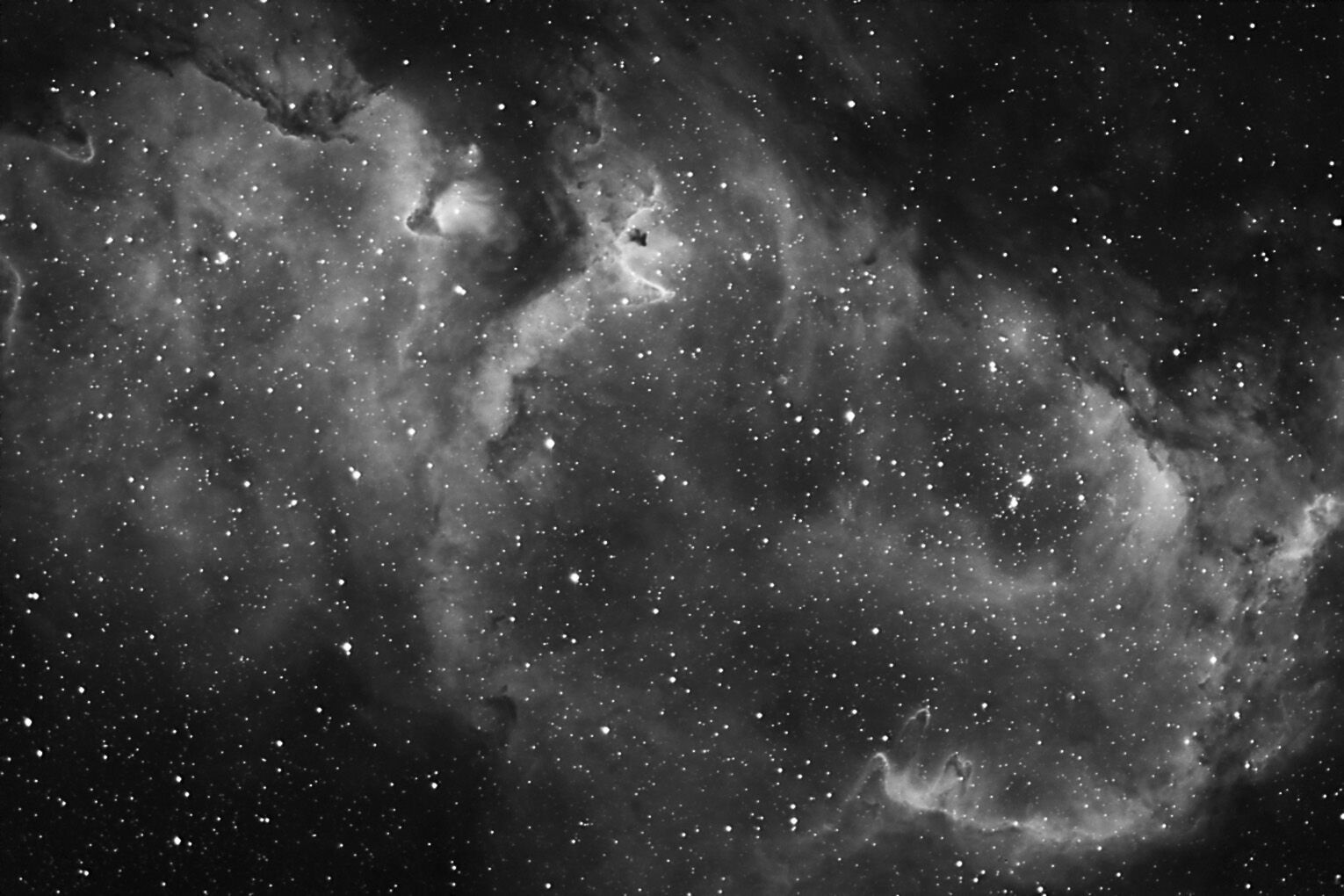
IC 1871, the Soul Nebula in the constellation Cassiopeia. Photo by club member Ken Westall, using a Hydrogen-Alpha filter. Click here for more information about this image.
